Healthy a1c. Comprehensive Guide to A1C: Understanding Test Results, Levels, and Diabetes Management
What is an A1C test and how does it measure blood sugar levels. How often should diabetics get an A1C test. What are normal A1C levels for people with and without diabetes. How can one lower their A1C levels through lifestyle changes and medication.
Understanding the A1C Test: A Key Measure of Blood Sugar Control
The hemoglobin A1C test is a crucial tool in diabetes management and diagnosis. This test provides valuable insights into a person’s average blood sugar levels over the past 2 to 3 months, offering a more comprehensive picture than daily glucose monitoring.
How does the A1C test work? The test measures the percentage of hemoglobin proteins in red blood cells that are coated with sugar (glycated). As red blood cells typically live for about 3 months, this test reflects the average blood sugar levels during this period.
Key Features of the A1C Test:
- Measures average blood sugar over 2-3 months
- Also known as HbA1c, glycated hemoglobin test, or glycohemoglobin
- Used for both diabetes diagnosis and ongoing management
- Helps determine if diabetes treatment plans need adjustment
Is fasting required for an A1C test? Unlike some other diabetes-related tests, the A1C test does not require fasting. It can be performed at any time of day, regardless of when you last ate or drank.

Decoding A1C Levels: What Do the Numbers Mean?
Understanding A1C levels is crucial for both diabetes prevention and management. The test results are expressed as a percentage, representing the amount of glycated hemoglobin in the blood.
A1C Levels Explained:
- Normal range (without diabetes): 4% to 5.6%
- Prediabetes range: 5.7% to 6.4%
- Diabetes diagnosis: 6.5% or higher
How do these percentages correlate with average blood sugar levels? An A1C of 7% corresponds to an average blood sugar level of about 154 mg/dL. For every percentage point increase in A1C, the average blood sugar level rises by approximately 29 mg/dL.
Are target A1C levels the same for everyone with diabetes? While a general target of less than 7% is often recommended, individual goals may vary based on factors such as age, overall health, and risk of hypoglycemia. It’s essential to work with your healthcare provider to determine the most appropriate target for your specific situation.
The Importance of Regular A1C Testing for Diabetes Management
Regular A1C testing is a cornerstone of effective diabetes management. The frequency of testing can vary depending on several factors, including the type of diabetes, current blood sugar control, and treatment plan.
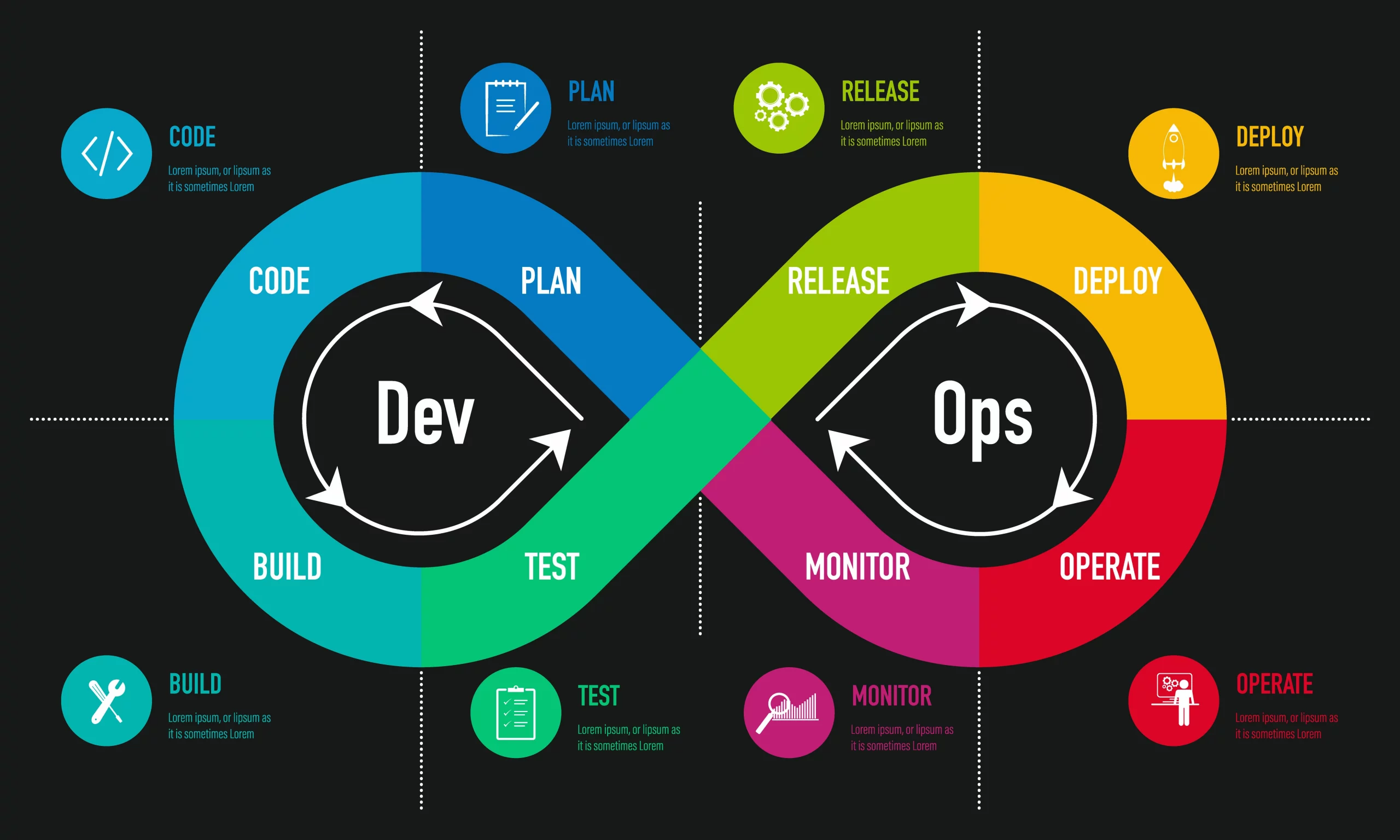
Recommended A1C Testing Frequency:
- Newly diagnosed diabetes: At diagnosis to establish a baseline
- Type 2 diabetes with stable control: Twice a year
- Type 1 diabetes or unstable Type 2: Three to four times a year
- Prediabetes: Once a year
Why is consistent A1C testing crucial? Regular testing allows healthcare providers to assess the effectiveness of current treatment plans and make necessary adjustments. It also helps identify trends in blood sugar control, potentially preventing complications before they arise.
Can A1C testing replace daily blood glucose monitoring? While A1C provides valuable long-term data, it doesn’t replace the need for daily monitoring. Both methods offer complementary information that’s essential for comprehensive diabetes management.
Factors Affecting A1C Test Results: Beyond Blood Sugar
While the A1C test is generally reliable, several factors can influence its results, potentially leading to inaccurate readings. Understanding these factors is crucial for proper interpretation of test results.

Common Factors Influencing A1C Results:
- Anemia and other hemoglobin-related conditions
- Supplements, particularly vitamins C and E
- High cholesterol levels
- Kidney and liver diseases
- Recent blood loss or transfusions
How do these factors affect A1C results? Conditions affecting red blood cell turnover or hemoglobin structure can lead to falsely high or low A1C readings. For instance, iron-deficiency anemia may cause elevated A1C levels that don’t accurately reflect average blood sugar.
Should individuals with these conditions rely on alternative testing methods? In cases where A1C results may be unreliable, healthcare providers might recommend alternative tests such as fructosamine or glycated albumin to assess blood sugar control.
Strategies for Lowering A1C Levels: Lifestyle Changes and Medical Interventions
For individuals with elevated A1C levels, a combination of lifestyle modifications and medical interventions can help bring blood sugar under control. Implementing these strategies can lead to improved A1C results and better overall health outcomes.

Effective Methods for Lowering A1C:
- Dietary changes: Focus on low-glycemic foods and portion control
- Regular exercise: Aim for at least 150 minutes of moderate activity per week
- Stress management: Practice relaxation techniques like meditation or yoga
- Medication adherence: Take prescribed diabetes medications as directed
- Blood sugar monitoring: Regular checks can help identify and address spikes
- Weight management: Losing excess weight can significantly improve insulin sensitivity
How quickly can lifestyle changes impact A1C levels? While individual results may vary, many people see improvements in their A1C within 2-3 months of implementing consistent lifestyle changes. However, it’s important to maintain these habits long-term for sustained benefits.
Are there specific dietary approaches that are particularly effective for lowering A1C? While individual needs may vary, research suggests that low-carbohydrate, Mediterranean, and plant-based diets can be effective in improving blood sugar control and lowering A1C levels.

The Role of A1C in Diabetes Prevention: Identifying and Addressing Prediabetes
The A1C test plays a crucial role not only in managing diabetes but also in preventing its onset. By identifying individuals with prediabetes, healthcare providers can implement early interventions to prevent or delay the progression to type 2 diabetes.
Key Points About Prediabetes and A1C:
- Prediabetes A1C range: 5.7% to 6.4%
- Increased risk of developing type 2 diabetes
- Often reversible through lifestyle modifications
- Regular monitoring recommended for those at risk
What are the risk factors for prediabetes? Common risk factors include being overweight or obese, having a family history of diabetes, leading a sedentary lifestyle, and being over 45 years old. Certain ethnic groups also have a higher risk of developing prediabetes and type 2 diabetes.
Can prediabetes be reversed without medication? In many cases, prediabetes can be reversed through lifestyle changes alone. A combination of weight loss, increased physical activity, and a balanced diet can significantly reduce the risk of progressing to type 2 diabetes.

Beyond A1C: Complementary Tests for Comprehensive Diabetes Management
While the A1C test provides valuable information about long-term blood sugar control, it’s not the only test used in diabetes management. A comprehensive approach often includes several complementary tests to provide a more complete picture of an individual’s health status.
Important Complementary Tests for Diabetes Management:
- Fasting Plasma Glucose (FPG): Measures blood sugar after an 8-hour fast
- Oral Glucose Tolerance Test (OGTT): Assesses how the body processes glucose
- Lipid Panel: Checks cholesterol and triglyceride levels
- Kidney Function Tests: Monitors for diabetic kidney disease
- Microalbuminuria: Detects early signs of kidney damage
How do these tests complement A1C results? While A1C provides an average of blood sugar levels over time, tests like FPG and OGTT offer insights into how the body handles glucose in real-time. Lipid panels and kidney function tests help monitor for potential diabetes-related complications.

Are there situations where these tests might be preferred over A1C? In cases where A1C results may be unreliable (such as certain anemias or during pregnancy), healthcare providers may rely more heavily on these alternative tests for diabetes diagnosis and management.
Technological Advancements in A1C Testing: Improving Accuracy and Accessibility
As diabetes management continues to evolve, so too does the technology behind A1C testing. Recent advancements have led to more accurate, accessible, and user-friendly testing options, empowering individuals to take a more active role in their diabetes care.
Recent Innovations in A1C Testing:
- Point-of-care A1C testing devices
- At-home A1C test kits
- Continuous glucose monitoring (CGM) integration
- Artificial intelligence-assisted result interpretation
How have point-of-care A1C tests changed diabetes management? These devices allow for rapid A1C testing during a healthcare visit, providing immediate results that can inform treatment decisions on the spot. This can lead to more timely interventions and improved patient outcomes.

Are at-home A1C test kits reliable? While at-home test kits have improved in accuracy, they are generally not considered as reliable as laboratory tests. They can, however, be useful for monitoring trends between clinical visits, especially for individuals with stable diabetes management.
What role does continuous glucose monitoring play in A1C assessment? CGM devices provide detailed, real-time data on blood sugar fluctuations. Some newer systems can estimate A1C based on continuous readings, offering a more dynamic picture of glucose control than traditional A1C tests alone.
A1C and Cardiovascular Risk: Understanding the Connection
The relationship between A1C levels and cardiovascular health is a critical aspect of diabetes management. Research has shown that elevated A1C levels are associated with an increased risk of cardiovascular disease, making A1C an important marker not only for blood sugar control but also for overall heart health.
Key Points on A1C and Cardiovascular Risk:
- Higher A1C levels correlate with increased cardiovascular risk
- Even small improvements in A1C can reduce heart disease risk
- Cardiovascular risk assessment should consider A1C alongside other factors
- Targeted A1C management may help prevent heart complications
How significant is the link between A1C and heart disease? Studies have shown that for every 1% increase in A1C above 7%, the risk of cardiovascular events increases by about 15%. This underscores the importance of maintaining good glycemic control for heart health.
![]()
Does lowering A1C always reduce cardiovascular risk? While improving A1C generally has positive effects on heart health, the relationship is complex. Very aggressive A1C lowering in some older adults or those with established cardiovascular disease may not always provide additional benefits and could potentially increase risks in some cases.
How should A1C be considered in overall cardiovascular risk assessment? A1C should be evaluated alongside other cardiovascular risk factors such as blood pressure, cholesterol levels, smoking status, and family history. This comprehensive approach allows for more personalized and effective risk management strategies.
A1C in Special Populations: Considerations for Pregnancy, Elderly, and Pediatric Patients
While A1C testing is a standard tool in diabetes management, its interpretation and target levels may vary for certain populations. Understanding these nuances is crucial for providing appropriate care across different life stages and health conditions.

A1C Considerations for Special Populations:
- Pregnancy: A1C targets are lower, typically below 6%
- Elderly: Goals may be less stringent to avoid hypoglycemia
- Children and adolescents: Targets vary by age and individual factors
- Individuals with comorbidities: May require adjusted A1C goals
Why are A1C targets lower during pregnancy? Tight glycemic control is crucial during pregnancy to reduce the risk of complications for both mother and baby. However, A1C may be less reliable in the second and third trimesters due to increased red blood cell turnover.
How do A1C goals differ for elderly patients? In older adults, especially those with multiple health conditions or limited life expectancy, less stringent A1C targets (such as 7.5-8.5%) may be appropriate to balance glycemic control with quality of life and hypoglycemia risk.
What factors influence A1C targets in pediatric patients? For children and adolescents, A1C goals are often individualized based on factors such as age, duration of diabetes, and risk of hypoglycemia. Generally, targets range from <7.5% for younger children to <7% for older teens, but may vary based on individual circumstances.

The Future of A1C Testing: Emerging Technologies and Personalized Medicine
As our understanding of diabetes and glycemic control continues to evolve, so too does the landscape of A1C testing and interpretation. Emerging technologies and the advent of personalized medicine promise to revolutionize how we approach A1C monitoring and diabetes management.
Future Directions in A1C Testing and Interpretation:
- Integration with wearable devices and smartphones
- Personalized A1C targets based on genetic profiles
- Advanced algorithms for predicting A1C trends
- Non-invasive A1C testing methods
- Combination with other biomarkers for comprehensive health assessment
How might wearable technology change A1C monitoring? Future wearable devices could potentially estimate A1C levels in real-time by continuously analyzing various physiological parameters. This could provide more dynamic and personalized glycemic management strategies.
What role might genetic testing play in A1C interpretation? Advances in genetic research may allow for more personalized A1C targets based on an individual’s genetic profile. This could lead to more tailored treatment plans that consider how different people respond to various interventions.

Are there promising developments in non-invasive A1C testing? Researchers are exploring various non-invasive methods, such as spectroscopy-based techniques, that could potentially measure A1C levels without the need for blood samples. While still in development, these methods could significantly improve the convenience and frequency of A1C monitoring in the future.
How might A1C testing evolve as part of a broader health assessment? Future approaches may combine A1C with other biomarkers and health data to provide a more comprehensive picture of overall health. This could lead to more holistic strategies for managing not just diabetes, but also related conditions and overall well-being.
A1c Chart, Test, Levels, & Normal Range
What Is an A1c Test?
The hemoglobin A1c test tells you your average level of blood sugar over the past 2 to 3 months. It’s also called HbA1c, glycated hemoglobin test, and glycohemoglobin. It’s a lot like a baseball player’s season batting average. A single game doesn’t tell you how a player is performing in their career. And 1 day’s test results don’t give you the complete picture of how your treatment is working.
People who have diabetes need this test regularly to see if their levels are staying within range. It can tell if you need to adjust your diabetes medicines. The A1c test is also used to diagnose diabetes.
What Is Hemoglobin?
Hemoglobin is a protein found in red blood cells. It gives blood its red color, and its job is to carry oxygen throughout your body.
How the Test Works
The sugar in your blood is called glucose. When glucose builds up in your blood, it binds to the hemoglobin in your red blood cells. The A1c test measures how much glucose is bound.
The A1c test measures how much glucose is bound.
Red blood cells live for about 3 months, so the test shows the average level of glucose in your blood for the past 3 months.
If your glucose levels have been high over recent weeks, your hemoglobin A1c test will be higher.
What’s a Normal Hemoglobin A1c Test?
For people without diabetes, the normal range for the hemoglobin A1c level is between 4% and 5.6%. Hemoglobin A1c levels between 5.7% and 6.4% mean you have prediabetes and a higher chance of getting diabetes. Levels of 6.5% or higher mean you have diabetes.
Setting Goals for A1c Levels
The target A1c level for people with diabetes is usually less than 7%. The higher the hemoglobin A1c, the higher your risk of having complications related to diabetes. Someone who has had untreated diabetes for a long time might have a level above 8%.
If you have diabetes and your level is above your target, your doctor may change your treatment plan to get your level down.
A combination of diet, exercise, and medication can bring your levels down.
People with diabetes should have an A1c test every 3 months to make sure their blood sugar is in their target range. If your diabetes is under good control, you may be able to wait longer between the blood tests. But experts recommend checking at least two times a year.
People with diseases affecting hemoglobin, such as anemia, may get misleading results with this test. Other things that can affect the results of the hemoglobin A1c include supplements such as vitamins C and E and high cholesterol levels. Kidney disease and liver disease may also affect the test.
How Often Do You Need the Test?
Your doctor probably will have you take the A1c test as soon as you’re diagnosed with diabetes. You’ll also have the test if your doctor thinks you may get diabetes. The test will set a baseline level so you can see how well you’re controlling your blood sugar.
The test will set a baseline level so you can see how well you’re controlling your blood sugar.
How often you’ll need the test after that depends on several things, like:
- The type of diabetes you have
- Your blood sugar control
- Your treatment plan
You’ll probably get tested once a year if you have prediabetes, which means you have a strong chance of developing diabetes.
You may get tested twice each year if you have type 2 diabetes, you don’t use insulin, and your blood sugar level is usually in your target range.
You could get it three or four times each year if you have type 1 diabetes.
You may also need the test more often if your diabetes plan changes or if you start a new medicine.
It’s not a fasting test. You can take it any time of day, before or after eating.
People with diseases affecting hemoglobin, such as anemia, may get misleading results with this test. Other things that can affect the results of the hemoglobin A1c include supplements, such as vitamins C and E, and high cholesterol levels.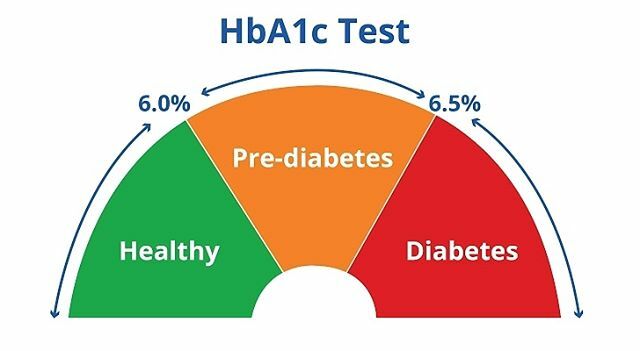 Kidney disease and liver disease may also affect the test.
Kidney disease and liver disease may also affect the test.
Diabetes Urine Tests To Determine Sugar & Glucose Levels
When you have diabetes, you’re no stranger to tests that keep track of your disease. Most look at your blood, but there are others. Two simple ones that check your urine can help you and your doctor watch for kidney disease and severe high blood sugar.
Tests for Kidney Disease
About one-third of people with diabetes have problems with their kidneys. But early and tight control of your blood sugar and blood pressure, plus help from certain medications, can keep these organs working like they should
To check for problems, your doctor can do a test that measures the amount of protein in your urine, called microalbuminuria. It shows up when small amounts of albumin (the main protein in your blood) seep into your pee. Without treatment to slow the leak, your kidneys could be damaged and eventually fail.
You should get this test every year starting as soon as you’re diagnosed with type 2 diabetes.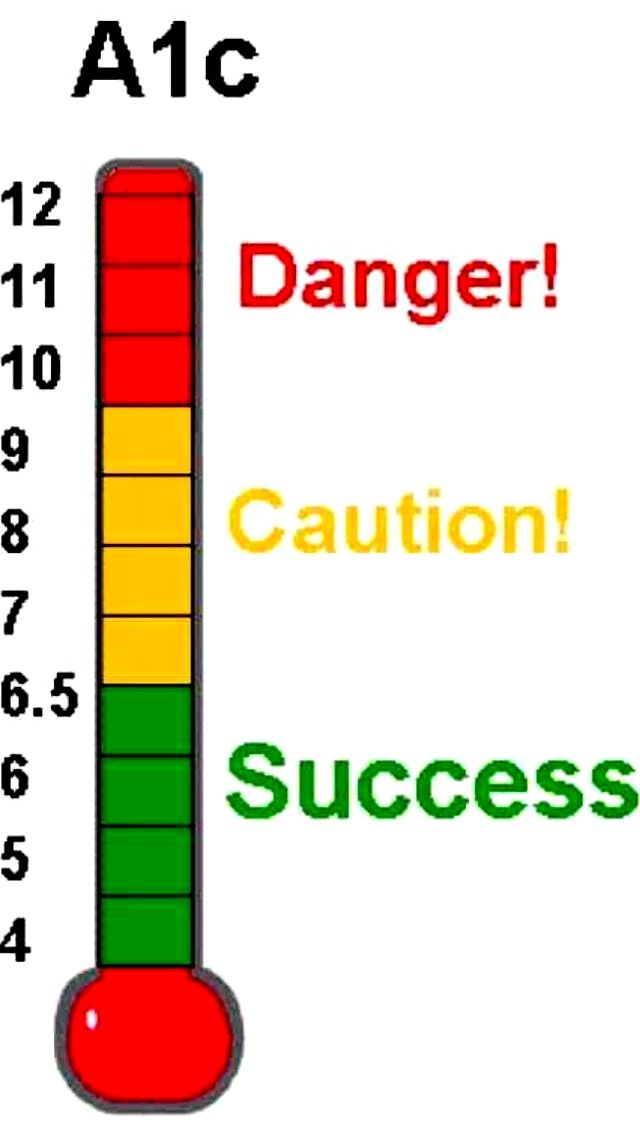 That’s because high blood sugar is usually present many years before you find out you have the disease.
That’s because high blood sugar is usually present many years before you find out you have the disease.
If you have type 1 diabetes, you probably won’t get the test until you’ve been diagnosed for 5 years.
What Does a Positive Result Mean?
If the test is positive, your kidneys are leaking protein into your urine. This is a sign that your kidneys are not working as well as they should — even if you feel fine and have no symptoms. Your doctor will suggest medications or lifestyle changes to help control these conditions:
- Kidney damage. You may start specific medicines to prevent further harm. If your microalbumin level is high, your doctor may suggest another type of test that requires you to collect samples for 24 hours. This can better tell the extent of damage to the kidneys and see how well they’re working.
- High blood sugar. Studies show tight control of your blood sugar can lower kidney damage, so your doctor may put you on more aggressive treatments.

- Blood pressure. Lowering blood pressure reduces your risk of diabetes-related kidney damage. Get it checked each time you have an office visit. The recommended reading for most people with diabetes is less than 130/80.
- Cholesterol. Since increases in microalbuminuria over time has been linked to heart disease risk, your doctor will work with you to keep your cholesterol and other fats in a healthy range.
- Other factors that can increase the risk of kidney disease are being overweight or obese and smoking.
Tests for High Blood Sugar
If you have type 1 diabetes, your doctor could ask you to check the urine for ketones. Your body makes them when it doesn’t have enough insulin and turns to fat stores to create energy for your cells. Ketones are toxic in large amounts. Too many of them can cause a life-threatening emergency condition called ketoacidosis.
How Do I Test?
Your doctor can check for ketone levels, or you can do it at home with an over-the-counter kit. You simply dip a test strip into your urine. It will change color, and you’ll compare it to a chart to see what your reading means.
You simply dip a test strip into your urine. It will change color, and you’ll compare it to a chart to see what your reading means.
When Should I Test?
If you have type 1 diabetes, you may need to check your urine for ketones if:
- You feel sick (have a cold, the flu, or other illness) and have nausea or vomiting.
- You’re pregnant.
- Your blood sugar level is over 300 mg/dL.
- You have symptoms of high blood sugar including extreme thirst or tiredness, a flushed or foggy feeling, or your breath smells fruity.
- The doctor tells you to.
If you have type 2 diabetes, there isn’t much chance you’ll have too many ketones, even if you’re taking insulin. But it could happen during a severe illness. Your doctor may tell you to check your urine when:
- You have a cold, the flu, or other illness or have unexplained nausea or vomiting.
- Your blood sugar level is over 300 mg/dL and continues to rise throughout the day.

When Should I Call the Doctor?
A urine test for ketones should always be negative. Report a positive result to your doctor immediately. You should also let them know right away if your blood sugar remains high or if you have stomach pain, nausea, vomiting, rapid breathing, sweet-smelling breath, or if you’re peeing a lot.
The doctor may tell you to:
- Drink plenty of water and fluids to lower the amounts of ketones and stay hydrated.
- Continue to check your blood sugar. If it’s high, you may need to give yourself a small amount of rapid-acting insulin.
- Go to the local emergency room so you can get intravenous fluids and insulin.
How Do I Record My Results?
Keep detailed records of any urine or ketone tests you perform. These can help alert you and your doctor to any problems. Bring them with you on every office visit.
Fasting Plasma Glucose, Results, Levels, Diagnosis
If you experience symptoms of severe increased thirst, frequent urination, unexplained weight loss, increased hunger, tingling of your hands or feet — your doctor may run a test for diabetes.
According to the Centers for Disease Control and Prevention, some 29 million children and adults in the U.S., or over 9% of the population, have diabetes today. Yet, millions of Americans are unaware that they have diabetes, because there may be no warning signs.
To confirm the diagnosis of type 2 diabetes, your doctor will order a fasting plasma glucose test or a casual plasma glucose.
Diabetes and the Fasting Plasma Glucose Test
The fasting plasma glucose test (FPG) is the preferred method for diagnosing diabetes, because it is easy to do, convenient, and less expensive than other tests, according to the American Diabetes Association.
How Do I Prepare for the Blood Glucose Test?
Before taking the blood glucose test, you will not be allowed to eat anything for at least eight hours.
What Happens During the Blood Glucose Test?
During a blood glucose test, blood will be drawn and sent to a lab for analysis.
What Do the Results of the Blood Glucose Test Mean?
Normal fasting blood glucose — or blood sugar — is between 70 and 100 milligrams per deciliter or mg/dL for people who do not have diabetes. The standard diagnosis of diabetes is made when two separate blood tests show that your fasting blood glucose level is greater than or equal to 126 mg/dL.
The standard diagnosis of diabetes is made when two separate blood tests show that your fasting blood glucose level is greater than or equal to 126 mg/dL.
However, if you have normal fasting blood sugar, but you have risk factors for diabetes or symptoms of diabetes, your doctor may decide to do a glucose tolerance test (see below) to be sure that you do not have diabetes.
Some people have a normal fasting blood sugar reading, but their blood sugar rapidly rises as they eat. These people may have impaired glucose tolerance. If their blood sugar levels are high enough, they may be diagnosed with diabetes.
The Casual Plasma Glucose Test for Diabetes
The casual plasma glucose test is another method of diagnosing diabetes. During the test, blood sugar is tested without regard to the time since the person’s last meal. You are not required to abstain from eating prior to the test.
A glucose level greater than 200 mg/dL may indicate diabetes, especially if the test is repeated at a later time and shows similar results.
The Oral Glucose Tolerance Test for Diabetes
The oral glucose tolerance test is yet another method used to detect diabetes, but it is usually only done during pregnancy to diagnose gestational diabetes or for someone who is suspected of having type 2 diabetes yet has a normal fasting glucose level. It can also be performed to diagnose prediabetes.
Diabetes and the Hemoglobin A1c Test
The hemoglobin A1c test (also called the glycated hemoglobin test or HbA1c), is an important diabetes blood test used to determine how well your diabetes is being controlled. This diabetes test provides an average of your blood sugar control over a six- to 12-week period and is used in conjunction with home blood sugar monitoring to make adjustments in your diabetes medicines. The HbA1c level can also be used to diagnose diabetes if a value of equal to or greater than 6.5% is found.
Other Diabetes Tests
Along with the hemoglobin A1c test, it’s important for people with diabetes to have a dilated eye exam at least once a year as part of a complete eye exam. This important test can detect early signs of retinopathy, which may have no symptoms at first. A foot exam once or twice a year — or at every doctor’s visit — is also imperative to detect decreased circulation and sores that may not be healing. Early detection of eye and foot problems in diabetes allows your doctor to prescribe proper treatment when it is most effective.
This important test can detect early signs of retinopathy, which may have no symptoms at first. A foot exam once or twice a year — or at every doctor’s visit — is also imperative to detect decreased circulation and sores that may not be healing. Early detection of eye and foot problems in diabetes allows your doctor to prescribe proper treatment when it is most effective.
Diabetes Testing in Children
Many children have no symptoms before they are diagnosed with type 2 diabetes. Most of the time, diabetes is discovered when a blood or urine test taken for other health problems shows diabetes.
Talk to your doctor about your child’s risk for diabetes. If your child’s blood sugar tests are higher than normal, but not yet at the level of diabetes (called prediabetes), your doctor may instruct you in specific diet and exercise changes to help your child avoid getting diabetes altogether. Children with type 2 diabetes or prediabetes are almost always overweight or obese.
Understanding Your Diabetes Diagnosis
Diabetes can cause major health problems if you do not keep your blood sugar in check. However, you can stay healthy and feel good despite your diagnosis if you follow your doctor’s recommended treatment plan and maintain a healthy lifestyle. By choosing foods wisely, exercising regularly, maintaining a normal weight, reducing your stress level, and making other modest lifestyle changes, living with diabetes will be easier.
5 Ways to Lower Your A1C
The A1C test results provide insight into how your treatment plan is working, and how it might be modified to better control the condition. Often your blood sample is sent out to a lab for your results; though some doctors can use a point-of-care A1C test, where a finger stick can be done in the office, with results available in about 10 minutes. Such an in-office test can be used to monitor your condition.
Nonetheless, the National Institute of Diabetes and Digestive and Kidney Diseases (NIDDKD) notes that point-of-care tests should not be used for diagnosis, which can only be done by lab tests certified by the NGSP. Any results pointing to a change in your health should be confirmed by conventional lab tests.
Any results pointing to a change in your health should be confirmed by conventional lab tests.
RELATED: 9 Signs Your Blood Sugar Is Out of Control
What Do Your A1C Results Mean?
The A1C test measures the glucose (blood sugar) in your blood by assessing the amount of what’s called glycated hemoglobin. “Hemoglobin is a protein within red blood cells. As glucose enters the bloodstream, it binds to hemoglobin, or glycates. The more glucose that enters the bloodstream, the higher the amount of glycated hemoglobin,” Dr. Dodell says.
According to the ADA, A1C level below 5.7 percent is considered normal. An A1C between 5.7 and 6.4 percent signals prediabetes, according to the ADA. Type 2 diabetes is diagnosed when the A1C is at or over 6.5 percent. For many people with type 2 diabetes, the goal is to lower A1C levels to a healthier percentage.
Your A1C goal is specific to you. Several factors come into play, such as your age, how advanced the diabetes is, and any other heath conditions you have. A common A1C goal for people with diabetes is less than 7 percent, Dodell says. If you can keep your A1C number below your goal, you help to reduce the risk of diabetes complications, such as nerve damage and eye problems.
A common A1C goal for people with diabetes is less than 7 percent, Dodell says. If you can keep your A1C number below your goal, you help to reduce the risk of diabetes complications, such as nerve damage and eye problems.
RELATED: A1C May Fall Short in Diagnosing Some People With Diabetes
What Are the Top Tips for Lowering A1C?
Your A1C score is a valuable part of the diabetes control picture, Dodell says, but it is not the only indicator of your health. Someone who has wide fluctuations in blood sugar levels (which is more common among patients who are taking insulin) may have an A1C at goal because the average over two to three months is good. But the day-to-day fluctuations can lower your quality of life and increase your risk of complications, he cautions.
Diabetes can be a tough condition to manage, Dodell says. He tells his patients to view diabetes management like a job. It takes work, but the time and effort you put into it can result in good control and an improved quality of life. “The key to reaching your A1C goal is trying to follow a healthy lifestyle,” he says.
“The key to reaching your A1C goal is trying to follow a healthy lifestyle,” he says.
Making these healthy changes can help you improve your day-to-day blood sugar management and lower your A1C:
1. Start an Exercise Plan You Enjoy and Do It Regularly
Find something you enjoy doing that gets your body moving — take your dog for a walk, play a sport with a friend, or ride a stationary bike indoors or a regular bike outdoors.
A good goal is to get 150 minutes of moderate exercise per week, recommends Jordana Turkel, a registered dietitian and certified diabetes educator at Park Avenue Endocrinology and Nutrition in New York City. This is also what the ADA recommends. Different types of exercise (both strength training or resistance training and aerobic exercise) can lower your A1C by making the body more sensitive to insulin, Turkel says. She encourages her patients not to go more than two days in a row without exercising, and to aim for two days of strength training.
Be sure to check with your healthcare provider before embarking on an exercise plan, though. He or she can come up with an individualized plan for you.
And if you monitor your blood sugar daily, check it before and after exercise. As the Joslin Diabetes Center at Harvard Medical School explains, exercise can cause your blood sugar to rise, as more is released from the liver, and blood sugar to fall, due to increase insulin sensitivity. Fluctuations in your blood sugar levels can result if you aren’t careful. This is particularly important if you are on insulin or another diabetes medication that causes insulin secretion, such as include sulfonylureas, such as Amaryl (glimepiride), and glinides, such as Prandin (repaglinide) and Starlix (nateglinide).
2. Eat a Balanced Diet With Proper Portion Sizes
It’s best to check with a certified diabetes care and education specialist or a registered dietitian-nutritionist to determine what a balanced diet and appropriate portions mean for you. But a great rule of thumb is to visualize your plate for every meal and aim to fill one-half of it with veggies, one-quarter with protein, and one-quarter with whole grains, says Turkel. If you like fruit, limit your portions to a small cup, eaten with a little protein or lean fat to help you digest the fruit carbohydrates in a manner that is less likely to spike your blood sugar level.
But a great rule of thumb is to visualize your plate for every meal and aim to fill one-half of it with veggies, one-quarter with protein, and one-quarter with whole grains, says Turkel. If you like fruit, limit your portions to a small cup, eaten with a little protein or lean fat to help you digest the fruit carbohydrates in a manner that is less likely to spike your blood sugar level.
Also, avoid processed foods as much as possible, and say no to sugary sodas and fruit juice, which are high in carbs and calories, and thus can lead to spikes in blood sugar and contribute to weight gain, according to the ADA.
RELATED: The Best and Worst Drinks for People With Type 2 Diabetes
3. Stick to a Regular Schedule, So You Can More Easily Follow Your Healthy Diet and Lifestyle
Skipping meals, letting too much time pass between meals, or eating too much or too often can cause your blood sugar levels to fall and rise too much, the ADA points out. This is especially true if you are taking insulin or certain diabetes drugs. Your doctor can help you determine the best meal schedule for your lifestyle.
This is especially true if you are taking insulin or certain diabetes drugs. Your doctor can help you determine the best meal schedule for your lifestyle.
4. Follow the Diabetes Treatment Plan Your Healthcare Team Recommends
Diabetes treatment is very individualized, noted an article published in May 2014 in Diabetes Spectrum. After all, factors including how long you’ve lived with the disease, your socioeconomic status, and any other conditions you’re living with can play a role in the best treatment approach for you.
Your healthcare team will help you determine the steps you need to take to successfully manage diabetes. Always talk to your doctor before making any changes, such as starting a very-low-carbohydrate diet or beginning a new exercise regimen, and especially before making any medication or insulin changes.
RELATED: 6 Top Diabetes Exercise Mistakes and How to Avoid Them
5. Check Your Blood Sugar Levels as Your Doctor Has Directed
Work with your doctor to determine if, and how often, you should check your blood sugar. You may be tempted to pick up an A1C home testing kit, but Dowdell does not recommend doing that. As he mentions, day-to-day fluctuations in your blood sugar can be masked by an A1C result that is at your goal level. Instead, if you have a personal continuous glucose monitor, such as a Dexcom G6 or a Freestyle Libre (or can get one from your healthcare provider), Dowdell recommends checking your “time in range” to see if you are at the optimal level. For many people that is 70 to 180 milligrams per decilter (mg/dL) (3.9 to 10 mmol/L), according to ADA guidelines. Having your A1C checked by your healthcare provider every three to six months is sufficient, he adds.
You may be tempted to pick up an A1C home testing kit, but Dowdell does not recommend doing that. As he mentions, day-to-day fluctuations in your blood sugar can be masked by an A1C result that is at your goal level. Instead, if you have a personal continuous glucose monitor, such as a Dexcom G6 or a Freestyle Libre (or can get one from your healthcare provider), Dowdell recommends checking your “time in range” to see if you are at the optimal level. For many people that is 70 to 180 milligrams per decilter (mg/dL) (3.9 to 10 mmol/L), according to ADA guidelines. Having your A1C checked by your healthcare provider every three to six months is sufficient, he adds.
Understanding your A1C levels is an important part of your overall diabetes management. If you have any questions about your A1C levels or what they mean, don’t hesitate to ask your doctor.
Additional reporting by Mikel Theobald.
Normal A1C levels and 15 ways to lower high A1C
The hemoglobin A1C test is the closest thing to a diabetes scorecard you can find. Whether someone has had diabetes mellitus for years or if they have just been diagnosed, they have probably heard about this test. Unlike blood sugar meters people use at home, the A1C measures an average blood sugar level over the past several months by analyzing how many of a patient’s hemoglobin cells have glucose attached to them. The test results keep track of how well a person is managing his or her diabetes.
Whether someone has had diabetes mellitus for years or if they have just been diagnosed, they have probably heard about this test. Unlike blood sugar meters people use at home, the A1C measures an average blood sugar level over the past several months by analyzing how many of a patient’s hemoglobin cells have glucose attached to them. The test results keep track of how well a person is managing his or her diabetes.
What does A1C stand for?
Hemoglobin A1C (HbA1C), commonly called A1C, stands for glycosylated hemoglobin. An A1C test (sometimes called the HbA1C test or glycohemoglobin test) provides information on how well-controlled a person’s diabetes is. “It does this by measuring the percentage of red blood cell hemoglobin protein that has sugar stuck to it and provides a three-month average of your blood glucose levels,” explains Marie Bellantoni, MD, a board-certified endocrinologist at the Center for Endocrinology at Mercy Medical in Baltimore. The higher blood sugar levels are, the more glucose attaches to hemoglobin. The results provide patients and their healthcare providers with information on how well their treatment, diet, and medication is working and whether adjustments are necessary.
The results provide patients and their healthcare providers with information on how well their treatment, diet, and medication is working and whether adjustments are necessary.
RELATED: Diabetes medications and treatments
A1C test
There are a few reasons a doctor might suggest an A1C test:
- To make a diagnosis of Type 2 diabetes
- To test for prediabetes
- To monitor blood sugar levels
- To determine if treatment adjustments are needed
The A1C blood test is not for diagnosing Type 1 diabetes, gestational diabetes, or cystic fibrosis-related diabetes, according to the National Institute of Diabetes and Digestive and Kidney Diseases (NIDDK).
Do you have to fast for an A1C blood test?
Unlike the fasting plasma glucose (FPG) and the OGTT tests, there is no need to fast before having the A1C test. If A1C test results indicate a person has or might have diabetes, a healthcare provider might suggest one of these tests to confirm the results. Another test, the random plasma glucose test, which does not require fasting, can also be used. If the results are borderline or if the results of the different tests do not match, a doctor might suggest repeating the test in several weeks or months.
Another test, the random plasma glucose test, which does not require fasting, can also be used. If the results are borderline or if the results of the different tests do not match, a doctor might suggest repeating the test in several weeks or months.
How accurate are A1C tests?
A1C levels rise well before the clinical onset of diabetes, making early diagnosis possible according to the 2017 Standards of Medical Care in Diabetes by the American Diabetes Association (ADA). Sometimes, however, in the early stages of diabetes, blood sugar levels are not high enough to show up as problematic. Testing environments, such as temperature in the lab, equipment used, and handling of samples, can affect the results; however, this is more common in the fasting plasma glucose and the OGTT than in the A1C. Strict quality controls and advancements in testing have made the A1C test more precise than in the past, according to the NIDDK. Doctors should be aware of laboratories that use an NGSP-certified method of testing for A1C levels. The NIDDK warns that blood samples taken at home or analyzed in a healthcare provider’s office should not be used for diagnosis.
The NIDDK warns that blood samples taken at home or analyzed in a healthcare provider’s office should not be used for diagnosis.
There are some health conditions and situations that might skew the results of the test. These include:
- Anemia
- Kidney failure
- Liver disease
- Sickle cell anemia
- Erythropoietin treatment
- Dialysis
- Blood loss or blood transfusions
Also, the test can be unreliable for people of African, Mediterranean, or Southeast Asian descent, people with a family member with sickle cell anemia, and those with thalassemia. For those who fall into these groups, a healthcare provider might suggest a different test or a specialized A1C.
How often is A1C tested?
To keep A1C levels in check, patients should have the test repeated regularly. “If the A1C is less than 5.7, indicating you don’t have diabetes, you should have it checked every three years,” according to Robert Williams, MD, a family doctor and geriatrician in Lakewood, Colorado, and a medical advisor for eMediHealth. “If it is between 5.7 and 6.4, indicating you are at risk of developing diabetes, you should have it rechecked every one to two years. If you have a confirmed diabetes diagnosis, and your blood sugar is well-controlled, you should have an A1C test every six months. If you already have diabetes and your medications change, or your blood sugar is not well-controlled, you should have an A1C test every three months.”
“If it is between 5.7 and 6.4, indicating you are at risk of developing diabetes, you should have it rechecked every one to two years. If you have a confirmed diabetes diagnosis, and your blood sugar is well-controlled, you should have an A1C test every six months. If you already have diabetes and your medications change, or your blood sugar is not well-controlled, you should have an A1C test every three months.”
Normal A1C levels
There are some general guidelines for interpreting A1C results. However, there are also exceptions, according to the ADA. The general guidelines are:
- Under 5.7: Non-diabetic
- Between 5.7 and 6.4: Prediabetes
- Between 6.0 and 6.9: Controlled diabetes
- Between 7.0 and 8.9: Uncontrolled diabetes
- Over 9.0: Critically high
For reference, normal A1C levels for people without diabetes is 4% to 5.6%.
What is a good A1C level?
Levels between 5. 7 and 6.4 are considered prediabetes. For most people with diabetes, the general A1C goal is to have a level between 6.0 and 6.9. While it might sound like the ideal A1C target is under 6.0, for those with diabetes, this level can indicate low blood sugar levels, which can be just as dangerous as high blood sugar levels. If A1C results fall between 7.0 and 8.9, a doctor might suggest lifestyle changes or medications to help lower the levels to what is considered controlled. However, for some people, these levels might be appropriate, such as:
7 and 6.4 are considered prediabetes. For most people with diabetes, the general A1C goal is to have a level between 6.0 and 6.9. While it might sound like the ideal A1C target is under 6.0, for those with diabetes, this level can indicate low blood sugar levels, which can be just as dangerous as high blood sugar levels. If A1C results fall between 7.0 and 8.9, a doctor might suggest lifestyle changes or medications to help lower the levels to what is considered controlled. However, for some people, these levels might be appropriate, such as:
- Those with a limited life expectancy
- People with long-standing diabetes who have trouble reaching a lower goal
- Those with severe hypoglycemia or the inability to sense hypoglycemia
What is a dangerous level of A1C?
When levels rise to 9.0, the risk of kidney and eye damage and neuropathy increases. Some people who are newly diagnosed could have levels over 9.0. Lifestyle changes and possibly medication can lower levels quickly. For someone who has long-standing diabetes, levels rise above 9.0 could signal the need for a change in their treatment plan.
For someone who has long-standing diabetes, levels rise above 9.0 could signal the need for a change in their treatment plan.
Some labs estimate average blood glucose (eAG), which corresponds to home glucose meter readings (mg/dL), allowing patients to understand the results better.
Why is my A1C high?
As blood sugar level rises, so do A1C levels. “A high A1C indicates that blood sugar control is not optimal. This in itself is not an emergency, but it gives your healthcare provider a picture of how blood glucose has, or has not, been controlled,” says Dr. Williams.
Poor diabetes control or a need for medication adjustments might cause higher A1C. Diet changes, daily exercise, or medication adjustments might quickly lower A1C. Because Type 2 diabetes is a progressive disease, adjustments to one’s treatment might be a part of the process of controlling diabetes. Poor diabetes control does not always mean a patient is doing something wrong. But there are other reasons why levels might be high.
As previously mentioned, other health conditions can cause skewed results. These include kidney disease, anemia, liver disease, asplenia, blood loss, hypothyroidism, uremia, and sickle cell anemia. Other factors that might lead to a high A1C level include increased age, pregnancy, and gestational diabetes.
Can you have high A1C and not be diabetic?
According to one 2009 study, 3.8% of people without a history of diabetes have an elevated A1C level (over 6.0). This group is more likely to have other risk factors for Type 2 diabetes and cardiovascular disease. Researchers found that the following groups were more likely to have an elevated A1C without having a diagnosis of diabetes:
- Older
- Male
- Non-Hispanic black and Mexican American
- Hypertension
- Obesity
- Higher C-reactive protein levels
A high A1C result might signal that there is a problem. “Even a modest increase in your blood sugar, above normal levels, can increase your risk of heart disease, even when you don’t have full-blown diabetes,” says Dr. Bellatoni. A physician can review test results and talk to patients about risk factors and lifestyle changes to improve blood sugar levels.
Bellatoni. A physician can review test results and talk to patients about risk factors and lifestyle changes to improve blood sugar levels.
How to lower your A1C levels
“It’s important to get your hemoglobin A1C levels as close to normal as possible,” says Dr. Bellatoni, “Decreasing your hemoglobin A1C decreases your risk of having complications from diabetes. Even if you cannot get your A1C back to the normal range, any improvement lowers your risk of diabetes complications.”
Diabetes tracking and treatment
- Follow your diabetes treatment plan: Understand the treatment plan before leaving the healthcare provider’s office and discuss barriers (emotional, physical, financial) that could prevent you from following the program. Attend all follow-up visits.
- Consistently take prescribed medications: If a healthcare provider has prescribed medications to reduce blood sugar levels, take them regularly.
 Some people only take medication when they aren’t feeling well, but these medications don’t work unless taken consistently.
Some people only take medication when they aren’t feeling well, but these medications don’t work unless taken consistently. - Monitor and track blood sugar: Regular blood sugar monitoring is the most important step in diabetes management, according to the CDC. Healthcare providers can inform patients of different types of meters and help patients find the best one for them. Providers can also tell patients how often to check their blood sugar and what their target blood sugar range is. Keep a log of your blood sugar levels to look for patterns and triggers for blood sugar spikes and lows. If you wear a continuous glucose monitor, you can use the data. Learning what causes blood sugar to rise or decrease can help you create a plan to keep it consistent.
Diet changes
- Weight loss: You might not need to lose as much weight as you think. A study published in 2019 found that people with Type 2 diabetes who reduced their body weight by 10% within five years of their diagnosis achieved remission from the disease.
 Work with a healthcare provider to come up with a weight loss goal. Work with a nutritionist or dietitian to help create a feasible meal plan.
Work with a healthcare provider to come up with a weight loss goal. Work with a nutritionist or dietitian to help create a feasible meal plan. - Plan grocery shopping and meals: Eating on the go often involves foods that are unhealthy. Take time to plan meals and use those to create a healthy grocery list.
- Don’t skip breakfast: A study published in the journal Obesity found that people who ate a large breakfast rich in protein and fat helped reduce A1C and blood pressure.
- Eat a healthy diet with proper portions: Aim for half of your plate to be low-starch vegetables, one-fourth lean protein, and one-fourth whole grains. Blood sugar levels can increase if you eat more than your body needs. Use food scales and measuring cups and spoons to make sure portions are appropriate.
- Monitor carbohydrate intake: Eat carbs that have high fiber and nutrients, such as whole grains, whole fruits and vegetables, and legumes.
 Avoid carbs like candy, cakes, white bread, rice, and pasta.
Avoid carbs like candy, cakes, white bread, rice, and pasta. - Stick to a meal schedule: Some people with diabetes find it best to eat at the same time each day. Certain diabetes medications or insulin can cause blood sugar to drop too low if you skip a meal, according to the NIDDK. Talk with a healthcare provider if you aren’t sure what the best meal schedule is. A nutritionist, dietitian, or certified diabetes educator (CDE) can help you find the right diet.
Lifestyle changes
- Exercise regularly: Both aerobic and resistance training help to reduce glycemic control, according to a study published in 2016. Exercise improves blood glucose control, reduces cardiovascular risk factors, contributes to weight loss, and improves wellbeing. For people with prediabetes, regular exercise might prevent or delay Type 2 diabetes development.
- Keep moving: Keeping active makes the body more sensitive to insulin, according to the Centers for Disease Control and Prevention (CDC).
 Although regular exercise is important, daily activity is also considered moderate-intensity physical activity. Daily activities include gardening, walking, dancing, mowing the lawn, swimming, and even doing housework.
Although regular exercise is important, daily activity is also considered moderate-intensity physical activity. Daily activities include gardening, walking, dancing, mowing the lawn, swimming, and even doing housework. - Consider supplements: There is limited research into whether supplements and herbs can help lower blood sugar. For example, a review published in 2013 tested aloe vera for diabetes in rats and found it might help. Additionally, a study published in 2017 found people with prediabetes who used powdered fenugreek seed were less likely to receive a diagnosis of diabetes. And although the evidence is conflicting, a meta-analysis conducted in 2013 found consuming cinnamon significantly decreased glucose. The ADA doesn’t recommend cinnamon to reduce glucose, and it shouldn’t be a first-line treatment. Always talk to a healthcare provider before taking supplements.
Psychological adjustments
- Use stress management tools: A study published in 2018 found that using mindfulness to reduce stress resulted in decreased A1C levels as well as increased wellbeing and general health.

- Avoid denial statements: Denial can take many forms, according to the ADA. Avoid saying (or thinking) things like, “One bite won’t hurt,” “I don’t have time to eat healthy today,” or “My diabetes isn’t serious.”
- Connect with other people who have diabetes: Feeling alone can make it more challenging to stick to a treatment plan. Find an in-person support group or look for one online. Connecting with other people who are in a similar situation can offer support, guidance, and accountability.
Remember, A1C tests measure blood sugar levels over three months. Lifestyle and diet changes take several months before making a meaningful impact.
What Happens When A1C Is Too High?
A1C is a blood test that determines the body’s average blood sugar level over the past two to three months. A1C is also referred to as the hemoglobin A1C, HbA1c, glycated hemoglobin, or glycohemoglobin test. In the body, a protein called hemoglobin transports oxygen and nutrients throughout the body. It can pick up glucose on the way, and glucose will bind to the hemoglobin, which then becomes a glycated hemoglobin. The higher the glucose level in your bloodstream, the more glucose will attach to the hemoglobin. The A1C test measures the amount of hemoglobin with attached glucose.
In the body, a protein called hemoglobin transports oxygen and nutrients throughout the body. It can pick up glucose on the way, and glucose will bind to the hemoglobin, which then becomes a glycated hemoglobin. The higher the glucose level in your bloodstream, the more glucose will attach to the hemoglobin. The A1C test measures the amount of hemoglobin with attached glucose.
This test is used frequently to diagnose prediabetes and diabetes, as well as to monitor treatment plans for people with diabetes. Experts have determined healthy, prediabetes, and type 2 diabetes ranges for A1C, and knowing your A1C level can help you make adjustments to treatments and lifestyle.
Yoshiyoshi Hirokawa / Getty Images
A1C Ranges and What They Mean
An A1C result is presented as a percentage, which reflects the percentage of glucose and hemoglobin that are bound together. For example, the A1C level where there are five glycated hemoglobin out of 100 hemoglobin would be 5%.
The A1C ranges for normal, prediabetes, and diabetes are as follows:
- Normal: Less than 5.7%
- Prediabetes: 5.7% to 6.4%
- Diabetes: 6.5% or higher
The higher the A1C, the higher your blood glucose levels have been. If your A1C falls into the range of prediabetes, you should talk to your doctor to determine the best way to prevent type 2 diabetes because prediabetes is a known risk factor of type 2 diabetes. In general, within the prediabetes range, the higher the A1C, the greater the risk of diabetes.
The A1C test should not be used to diagnose type 1 diabetes, gestational diabetes, or cystic fibrosis-related diabetes.
What Happens When A1C Is Too High
A high A1C level should not be ignored. Studies show a direct correlation between high A1C and severe diabetes complications. An A1C level above 7% means someone is at an increased risk of complications from diabetes, which should prompt a person to make sure they have a plan in place to manage their blood sugar levels and decrease this risk.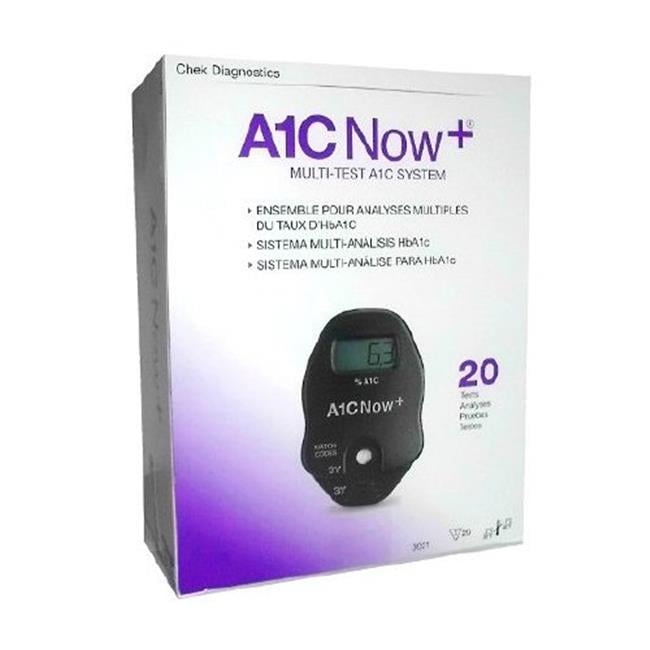 If these strategies are already in place, an increase in A1C may show that they need to be tweaked.
If these strategies are already in place, an increase in A1C may show that they need to be tweaked.
Several factors can falsely increase or decrease your A1C result, including:
- Kidney failure, liver disease, or severe anemia
- Being of African, Mediterranean, or Southeast Asian descent
- Certain blood disorders (such as sickle cell anemia or thalassemia)
- Certain medicines, including opioids and some HIV medications
- Blood loss or blood transfusions
- Early or late pregnancy
If better management doesn’t take place, high blood sugar can lead to serious complications like heart disease, stroke, vision loss, nerve damage, kidney disease, and gum disease. Short-term problems to look out for include hypoglycemia and hyperglycemia.
Heart Disease and Stroke
People living with diabetes have high blood sugar, and over time this can damage the blood vessels and nerves that control the heart, leading to heart disease. It has been found that people with diabetes tend to develop heart disease at a younger age than people without diabetes. Also, the longer you have diabetes, the more likely you are to have heart disease.
It has been found that people with diabetes tend to develop heart disease at a younger age than people without diabetes. Also, the longer you have diabetes, the more likely you are to have heart disease.
The most common type of heart disease is coronary artery disease, which is caused by the buildup of plaque in the walls of the coronary arteries, the blood vessels that supply oxygen and blood to the heart. Plaque is made of cholesterol deposits, which make the inside of arteries narrow and decrease blood flow. This process is called atherosclerosis, or hardening of the arteries. Decreased blood flow to the heart can cause a heart attack.
Decreased blood flow to the brain can also cause a stroke. Patients with diabetes are particularly at a significantly higher risk of stroke and have a higher mortality.
Those who have diabetes are also more likely to have other conditions that raise the risk for heart disease, including:
- High blood pressure: This increases the force of blood through your arteries and can damage artery walls.

- Too much low-density lipoprotein (LDL) cholesterol: Also, known as bad cholesterol, this can lead to the formation of plaque on damaged artery walls.
- High triglycerides: This combined with a low HDL cholesterol or high LDL cholesterol is thought to contribute to hardening of the arteries.
People with diabetes are also more likely to have heart failure, which is when your heart can’t pump blood well.
Blindness
Diabetes can also cause damage to your eyes that can lead to poor vision and vision loss. Eye problems that can affect people with diabetes are referred to as diabetic eye disease, which include diabetic retinopathy, diabetic macular edema (fluid retention in the retina), cataracts, and glaucoma. However, people with diabetes can take steps to prevent diabetes eye disease by taking care of their diabetes.
If your blood glucose stays high over time, it can damage the tiny blood vessels in the back of your eyes. This damage can begin during prediabetes. Damaged blood vessels may leak fluid and cause swelling. New, weak blood vessels may also begin to grow. These blood vessels can bleed into the middle part of the eye, lead to scarring, or cause dangerously high pressure inside your eye.
This damage can begin during prediabetes. Damaged blood vessels may leak fluid and cause swelling. New, weak blood vessels may also begin to grow. These blood vessels can bleed into the middle part of the eye, lead to scarring, or cause dangerously high pressure inside your eye.
Diabetic retinopathy is the most common cause of vision loss in people with diabetes. Finding and treating diabetic retinopathy early can reduce the risk of blindness by 95%.
There are often no warning signs when damage to your eyes first develops. A full, dilated eye exam helps your doctor find and treat eye problems early—before much vision loss can occur. Adults with type 1 diabetes get a dilated eye exam within five years of being diagnosed, and then every year after that. For adults with type 2 diabetes, they should have an eye exam soon after diagnosis and a dilated eye exam every year after.
Nerve Damage
Nerve damage caused by diabetes is called diabetic neuropathy. High blood sugar damages your nerves, and these nerves may stop sending messages to different parts of your body. Nerve damage can cause problems ranging from mild numbness to pain. Half of all people with diabetes have nerve damage.
High blood sugar damages your nerves, and these nerves may stop sending messages to different parts of your body. Nerve damage can cause problems ranging from mild numbness to pain. Half of all people with diabetes have nerve damage.
There are several types of neuropathy:
- Peripheral nerve damage: This type of damage affects your hands, feet, legs, and arms, and it’s the most common type of nerve damage for people with diabetes. It generally starts in the feet; usually in both feet at once.
- Autonomic nerve damage: This affects your heart, bladder, stomach, intestines, sex organs, or eyes.
- Proximal nerve damage: This affects nerves in the thighs, hips, buttocks, or legs. It can also affect the stomach and chest area.
- Focal nerve damage: This affects single nerves, most often in your hand, head, torso, or leg.
People with diabetes should be looking out for symptoms of nerve damage by recognizing new symptoms related to pain, numbness, or new problems with continence or bowel control. Like with other complications, keeping your blood sugar as close to your target range as possible is the best way to help prevent or delay nerve damage.
Like with other complications, keeping your blood sugar as close to your target range as possible is the best way to help prevent or delay nerve damage.
Kidney Disease
People with diabetes could also get diabetic kidney disease. About one out of three adults with diabetes has kidney disease. High blood glucose can damage the blood vessels in your kidneys. When that happens, they don’t work as well. Many people with diabetes also develop high blood pressure, which can also damage the kidneys.
Gum Disease
Diabetes doesn’t only lead to high blood sugar levels. People with diabetes also have sugars in saliva, which come in contact with the mouth. Their teeth and gums are therefore exposed to more sugars, which helps germs and plaque grow, irritating the gums and causing gum disease.
In addition to gum disease, your jaw and tongue, and other mouth tissue can be affected. The most common gum disease and other mouth problems that people with diabetes have include:
- Gingivitis (unhealthy or inflamed gums)
- Periodontitis
- Thrush (oral yeast infection)
- Xerostomia (dry mouth)
- Oral burning
Some of the first signs of gum disease are swollen, tender, or bleeding gums. Sometimes you may not have any signs of gum disease. You may not know you have it until you have serious damage. Your best defense is to see your dentist twice a year for a cleaning and checkup.
Sometimes you may not have any signs of gum disease. You may not know you have it until you have serious damage. Your best defense is to see your dentist twice a year for a cleaning and checkup.
Lowering A1C
While diabetes complications are severe, there are ways to manage blood sugar to lower your A1C levels and prevent them. With the help of medical professionals, a treatment plan, which includes medication and lifestyle changes, will help lower your levels and avoid complications.
Healthy Eating and Meal Tracking
Your diet has a huge impact on the way your body produces and uses blood sugar. In order to maintain a healthy blood sugar level and therefore lower A1C, healthy eating and meal tracking help. Meal tracking helps you plan ahead for healthy options as well as look back on what might have spiked your blood sugar.
A few healthy snacks to lower your A1C include:
- Berries
- Nuts
- Eggs
- Yogurt
- Apples
Stress Relief Techniques
Managing stress is crucial to staying healthy in general, and can particularly help people with diabetes.
Studies have shown that acute stress can increase glucose production and interfere with glucose utilization. This means better control of stress can have a positive impact on blood sugar levels.
Some stress relief techniques include:
- Yoga
- Journaling
- Meditating
- Talk therapy
Stay Active
Exercise helps people with diabetes for a variety of reasons, including weight loss and stress relief, but it also directly affects blood sugar levels. When you exercise, your muscles need and use sugar, which lowers the levels in the blood. Research has shown that long-term regular physical activity training had positive effects on glycemic control and body composition among patients with type 2 diabetes. It also promoted cardiovascular fitness among these patients.
The more exercise, the greater A1C reduction. Aim for at least 10 minutes of activity each day.
Medication and Regular Monitoring
A1C is an important tool for managing diabetes, but it doesn’t replace regular blood sugar testing at home. Blood sugar goes up and down throughout the day and night, which isn’t captured by your A1C. Two people can have the same A1C, one with steady blood sugar levels and the other with high and low swings.
If you’re reaching your A1C goal but having symptoms of highs or lows, check your blood sugar more often and at different times of day. Keep track and share the results with your doctor so you can make changes to your treatment plan and medications if needed.
A Word From Verywell
The A1C blood test is just one of many tools to check and monitor blood sugar. A1C is an average of your blood sugar level over 90 days, so doctors will likely recommend checking levels of blood sugar between A1C tests if blood sugar isn’t managed. Keeping track of your blood sugar regularly can help you identify things that affect your blood sugar level and tweak your management plan. Managing diabetes is your best defense against the various complications that this condition can cause. Discuss concerns and new symptoms with your doctor to make sure your treatment plan addresses your needs.
The A1C Test & Diabetes
On this page:
What is the A1C test?
The A1C test is a blood test that provides information about your average levels of blood glucose, also called blood sugar, over the past 3 months. The A1C test can be used to diagnose type 2 diabetes and prediabetes.1 The A1C test is also the primary test used for diabetes management.
An A1C test is a blood test that reflects your average blood glucose levels over the past 3 months.
The A1C test is sometimes called the hemoglobin A1C, HbA1c, glycated hemoglobin, or glycohemoglobin test. Hemoglobin is the part of a red blood cell that carries oxygen to the cells. Glucose attaches to or binds with hemoglobin in your blood cells, and the A1C test is based on this attachment of glucose to hemoglobin.
The higher the glucose level in your bloodstream, the more glucose will attach to the hemoglobin. The A1C test measures the amount of hemoglobin with attached glucose and reflects your average blood glucose levels over the past 3 months.
The A1C test result is reported as a percentage. The higher the percentage, the higher your blood glucose levels have been. A normal A1C level is below 5.7 percent.
Why should a person get the A1C test?
Testing can help health care professionals
- find prediabetes and counsel you about lifestyle changes to help you delay or prevent type 2 diabetes
- find type 2 diabetes
- work with you to monitor the disease and help make treatment decisions to prevent complications
If you have risk factors for prediabetes or diabetes, talk with your doctor about whether you should be tested.
You may be able to prevent or delay type 2 diabetes with lifestyle changes such as weight loss or being physically active most days of the week.
How is the A1C test used to diagnose type 2 diabetes and prediabetes?
Health care professionals can use the A1C test alone or in combination with other diabetes tests to diagnose type 2 diabetes and prediabetes. You don’t have to fast before having your blood drawn for an A1C test, which means that blood can be drawn for the test at any time of the day.
If you don’t have symptoms but the A1C test shows you have diabetes or prediabetes, you should have a repeat test on a different day using the A1C test or one of the other diabetes tests to confirm the diagnosis.2
A1C results and what the numbers mean
| Diagnosis* | A1C Level |
|---|---|
| Normal | below 5.7 percent |
| Prediabetes | 5.7 to 6.4 percent |
| Diabetes | 6.5 percent or above |
When using the A1C test for diagnosis, your doctor will send your blood sample taken from a vein to a lab that uses an NGSP-certified method. The NGSP, formerly called the National Glycohemoglobin Standardization Program, certifies that makers of A1C tests provide results that are consistent and comparable with those used in the Diabetes Control and Complications Trial.
Blood samples analyzed in a doctor’s office or clinic, known as point-of-care tests, should not be used for diagnosis.
The A1C test should not be used to diagnose type 1 diabetes, gestational diabetes, or cystic fibrosis-related diabetes. The A1C test may give false results in people with certain conditions.
Having prediabetes is a risk factor for developing type 2 diabetes. Within the prediabetes A1C range of 5.7 to 6.4 percent, the higher the A1C, the greater the risk of diabetes.
Is the A1C test used during pregnancy?
Health care professionals may use the A1C test early in pregnancy to see if a woman with risk factors had undiagnosed diabetes before becoming pregnant. Since the A1C test reflects your average blood glucose levels over the past 3 months, testing early in pregnancy may include values reflecting time before you were pregnant. The glucose challenge test or the oral glucose tolerance test (OGTT) are used to check for gestational diabetes, usually between 24 and 28 weeks of pregnancy. If you had gestational diabetes, you should be tested for diabetes no later than 12 weeks after your baby is born. If your blood glucose is still high, you may have type 2 diabetes. Even if your blood glucose is normal, you still have a greater chance of developing type 2 diabetes in the future and should get tested every 3 years.
Can other blood glucose tests be used to diagnose type 2 diabetes and prediabetes?
Yes. Health care professionals also use the fasting plasma glucose (FPG) test and the OGTT to diagnose type 2 diabetes and prediabetes. For these blood glucose tests used to diagnose diabetes, you must fast at least 8 hours before you have your blood drawn. If you have symptoms of diabetes, your doctor may use the random plasma glucose test, which doesn’t require fasting. In some cases, health care professionals use the A1C test to help confirm the results of another blood glucose test.
Can the A1C test result in a different diagnosis than the blood glucose tests?
Yes. In some people, a blood glucose test may show diabetes when an A1C test does not. The reverse can also occur—an A1C test may indicate diabetes even though a blood glucose test does not. Because of these differences in test results, health care professionals repeat tests before making a diagnosis.
People with differing test results may be in an early stage of the disease, when blood glucose levels have not risen high enough to show up on every test. In this case, health care professionals may choose to follow the person closely and repeat the test in several months.
Why do diabetes blood test results vary?
Lab test results can vary from day to day and from test to test. This can be a result of the following factors:
Blood glucose levels move up and down
Your results can vary because of natural changes in your blood glucose level. For example, your blood glucose level moves up and down when you eat or exercise. Sickness and stress also can affect your blood glucose test results. A1C tests are less likely to be affected by short-term changes than FPG or OGTT tests.
The following chart shows how multiple blood glucose measurements over 4 days compare with an A1C measurement.
Blood Glucose Measurements Compared with A1C Measurements over 4 Days
Blood glucose (mg/dL) measurements were taken four times per day (fasting or pre-breakfast, pre-lunch, pre-dinner, and bedtime).
The straight black line shows an A1C measurement of 7.0 percent. The blue line shows an example of how blood glucose test results might look from self-monitoring four times a day over a 4-day period.
A1C tests can be affected by changes in red blood cells or hemoglobin
Conditions that change the life span of red blood cells, such as recent blood loss, sickle cell disease, erythropoietin treatment, hemodialysis, or transfusion, can change A1C levels.
A falsely high A1C result can occur in people who are very low in iron; for example, those with iron-deficiency anemia. Other causes of false A1C results include kidney failure or liver disease.
If you’re of African, Mediterranean, or Southeast Asian descent or have family members with sickle cell anemia or a thalassemia, an A1C test can be unreliable for diagnosing or monitoring diabetes and prediabetes. People in these groups may have a different type of hemoglobin, known as a hemoglobin variant, which can interfere with some A1C tests. Most people with a hemoglobin variant have no symptoms and may not know that they carry this type of hemoglobin. Health care professionals may suspect interference—a falsely high or low result—when your A1C and blood glucose test results don’t match.
If you’re of African, Mediterranean, or Southeast Asian descent, you could have a different type of hemoglobin that affects your diabetes care.
Not all A1C tests are unreliable for people with a hemoglobin variant. People with false results from one type of A1C test may need a different type of A1C test to measure their average blood glucose level. The NGSP provides information for health care professionals about which A1C tests are appropriate to use for specific hemoglobin variants.
Read about diabetes blood tests for people of African, Mediterranean, or Southeast Asian descent. The NIDDK has information for health care providers on Sickle Cell Trait & Other Hemoglobinopathies & Diabetes.
Small changes in temperature, equipment, or sample handling
Even when the same blood sample is repeatedly measured in the same lab, the results may vary because of small changes in temperature, equipment, or sample handling. These factors tend to affect glucose measurements—fasting and OGTT—more than the A1C test.
Your health care professional can help you understand your test results.
Health care professionals understand these variations and repeat lab tests for confirmation. Diabetes develops over time, so even with variations in test results, health care professionals can tell when overall blood glucose levels are becoming too high.
How precise is the A1C test?
When repeated, the A1C test result can be slightly higher or lower than the first measurement. This means, for example, an A1C reported as 6.8 percent on one test could be reported in a range from 6.4 to 7.2 percent on a repeat test from the same blood sample.3 In the past, this range was larger but new, stricter quality-control standards mean more precise A1C test results.
Health care professionals can visit www.ngsp.org to find information about the precision of the A1C test used by their lab.
How is the A1C test used after diagnosis of diabetes?
Your health care professional may use the A1C test to set your treatment goals, modify therapy, and monitor your diabetes management.
Experts recommend that people with diabetes have an A1C test at least twice a year.4 Health care professionals may check your A1C more often if you aren’t meeting your treatment goals.4
What A1C goal should I have?
People will have different A1C targets, depending on their diabetes history and their general health. You should discuss your A1C target with your health care professional. Studies have shown that some people with diabetes can reduce the risk of diabetes complications by keeping A1C levels below 7 percent.
Managing blood glucose early in the course of diabetes may provide benefits for many years to come. However, an A1C level that is safe for one person may not be safe for another. For example, keeping an A1C level below 7 percent may not be safe if it leads to problems with hypoglycemia, also called low blood glucose.
Less strict blood glucose control, or an A1C between 7 and 8 percent—or even higher in some circumstances—may be appropriate in people who have
- limited life expectancy
- long-standing diabetes and trouble reaching a lower goal
- severe hypoglycemia or inability to sense hypoglycemia (also called hypoglycemia unawareness)
- advanced diabetes complications such as chronic kidney disease, nerve problems, or cardiovascular disease
How does A1C relate to estimated average glucose?
Estimated average glucose (eAG) is calculated from your A1C. Some laboratories report eAG with A1C test results. The eAG number helps you relate your A1C to daily glucose monitoring levels. The eAG calculation converts the A1C percentage to the same units used by home glucose meters—milligrams per deciliter (mg/dL).
The eAG number will not match daily glucose readings because it’s a long-term average—rather than your blood glucose level at a single time, as is measured with a home glucose meter.
Will the A1C test show short-term changes in blood glucose levels?
Large changes in your blood glucose levels over the past month will show up in your A1C test result, but the A1C test doesn’t show sudden, temporary increases or decreases in blood glucose levels. Even though A1C results represent a long-term average, blood glucose levels within the past 30 days have a greater effect on the A1C reading than those in previous months.
Clinical Trials for the A1C Test and Diabetes
The National Institute of Diabetes and Digestive and Kidney Diseases (NIDDK) and other components of the National Institutes of Health (NIH) conduct and support research into many diseases and conditions.
What are clinical trials and are they right for you?
Clinical trials are part of clinical research and at the heart of all medical advances. Clinical trials look at new ways to prevent, detect, or treat disease. Scientists are conducting research to learn more about diabetes, including studies about A1C. For example
- how the relationship between A1C and blood glucose may vary in different racial and ethnic groups
- to find other tests that may be better than A1C for some people
- to look for ways to further improve A1C test results. Because the A1C value depends on the average life span of your red blood cells, knowing whether the life span of your red blood cells is longer or shorter may give your doctor helpful information.
Researchers also use clinical trials to look at other aspects of care, such as improving the quality of life for people with chronic illnesses. Find out if clinical trials are right for you.
What clinical trials are open?
Clinical trials that are currently open and are recruiting can be viewed at www.ClinicalTrials.gov.
References
[1] Gillett MJ. International Expert Committee report on the role of the A1C assay in the diagnosis of diabetes. Diabetes Care. 2009;32(7):1327–1334.
[2] American Diabetes Association. 2. Classification and diagnosis of diabetes: Standards of Medical Care in Diabetes—2018. Diabetes Care. 2018;41(suppl 1):S13–S27.
[3] Penttilä I, Penttilä K, Holm P, et al. Methods, units and quality requirements for the analysis of haemoglobin A1c in diabetes mellitus. World Journal of Methodology. 2016;6(2):133–142.
[4] American Diabetes Association. 6. Glycemic targets: Standards of Medical Care in Diabetes—2018. Diabetes Care. 2018;41(suppl 1):S55–S64.
90,000 What you need to know about HbA1C
Among the many numbers of test results that doctors prepare, the simple meaning of an HbA1C test can help you figure out how well you are at keeping track of your blood sugar.
First of all, let’s find out what is HbA1C?
You can find various names for this indicator:
- A1c
- Glycated hemoglobin
- Glycosylated hemoglobin
- Hemoglobin A1C
The level of HbA1C (glycated hemoglobin) shows what percentage of hemoglobin in erythrocytes binds to glucose 1 .Since the lifetime of an erythrocyte that contains hemoglobin is several months, the HbA1C test allows you to establish how effective blood sugar control was in the previous 2-3 months.
How often should the HbA1C level be checked?
The American Diabetes Association (ADA) recommends that diabetic patients with stable blood sugar have an HbA1C test every six months, and if the target blood sugar level is not achieved or the treatment needs to be changed, such a test is done every 3 months 2 .
What level of HbA1C should you strive for?
The American Diabetes Association recommends that HbA1C levels be 7% or lower, and the closer to 6% with no health risk, the better. However, for each person, this level should be set depending on the state of health at the current moment and taking into account many factors (in particular, whether a person feels the onset of hypoglycemia). Most likely, if your HbA1C level exceeds 7%, your doctor will advise you on what to do to reduce it, because, among other things, reducing this indicator helps to reduce the risk of long-term complications of diabetes, which we are trying to prevent 2 .
Is it possible to do without measuring blood sugar if an HbA1C test is done?
Since the HbA1C level is an average value, it cannot guarantee that blood sugar values are within a safe range throughout the day. Let’s see what the average value means. The average for the numbers 5-5-5-5 and the numbers 1-9-1-9 will be 5, but on the chart, the numbers 1-9-1-9 will look like sharp ups and downs. This also applies to blood sugar levels. If there are many sharp rises and falls after averaging, the HbA1C level can be similar to the HbA1C level of a healthy person 3 .
Therefore, it is most correct to evaluate the results of the analysis for HbA1C in the presence of the results of self-monitoring of blood sugar levels. It is impossible to understand how the disease develops without self-monitoring of blood sugar levels.
If HbA1C levels are low, do fluctuations in blood sugar matter?
Blood sugar levels tend to change throughout the day, and this is due to what we eat, how much we move and how much we rest. Currently, along with the results of the HbA1C analysis, a high variability of glycemia is also assessed – this is the name of these fluctuations in blood sugar levels.
Data obtained in a study on the treatment and complications of diabetes (Diabetes Control and Complications Trial, DCCT 4 ) showed that with the same level of HbA1C, those patients who have more pronounced fluctuations in blood sugar levels are more susceptible to certain types of complications …
If you want to know if you are at risk and how your actions affect your blood sugar, then using the Accu-Chek 360 ° Form (Blood Glucose Test: Before and After Meals) you can understand how food , exercise, medication, stress, or illness can affect blood sugar levels throughout the day.It has been proven that this analysis system even helps to reduce the level of HbA1C when worked with a doctor 5 . Start making a difference now.
Glycated hemoglobin (HbA1c)
Glycated hemoglobin (A1c) is a specific compound of erythrocyte hemoglobin with glucose, the concentration of which reflects the average blood glucose level over a period of about three months.
Synonyms Russian
Glycohemoglobin, hemoglobin A1c, Hb A1c , glycosylated hemoglobin.
English synonyms
Glycated hemoglobin, hemoglobin A1c, HbA1c, glycohemoglobin, glycosylated hemoglobin.
Research method
Ion exchange high performance liquid chromatography (HPLC).
Units
% (percent).
What kind of biomaterial can be used for research?
Venous blood.
How to properly prepare for the study?
- Do not eat for 2-3 hours before the study, you can drink clean non-carbonated water.
- Eliminate physical and emotional stress for 30 minutes before the study.
- Do not smoke for 30 minutes prior to examination.
General information about the study
The Glycated Hemoglobin (A1c) Test helps you estimate your average blood glucose over the past 2-3 months.
Hemoglobin is an oxygen-carrying protein found inside red blood cells (erythrocytes). There are several types of normal hemoglobin, and many abnormal ones have been identified, although the predominant form is hemoglobin A, accounting for 95-98% of total hemoglobin.Hemoglobin A is subdivided into several components, one of which is A1c. Part of the glucose circulating in the blood spontaneously binds to hemoglobin, forming the so-called glycated hemoglobin. The higher the concentration of glucose in the blood, the more glycated hemoglobin is formed. Having combined with hemoglobin, glucose remains “in conjunction” with it until the very end of the erythrocyte’s life, that is, 120 days. The combination of glucose with hemoglobin A is called HbA1c or A1c. Glycated hemoglobin is formed in the blood and disappears from it every day, as old red blood cells die, and young (not yet glycated) take their place.
The hemoglobin A1c test is used to monitor the condition of patients diagnosed with diabetes mellitus. It helps to assess how effectively glucose regulation is going on during the course of treatment.
In some patients, a hemoglobin A1c test is prescribed to diagnose diabetes and pre-diabetes in addition to a fasting plasma glucose test and a glucose tolerance test.
The resulting indicator is measured as a percentage.Patients with diabetes should strive to keep their glycated hemoglobin levels below 7%.
A1c should be specified in one of three ways:
- as a percentage of the total amount of hemoglobin,
- in mmol / mol, according to the International Federation of Clinical Chemistry and Laboratory Medicine,
- as the average glucose content mg / dl or mmol / l.
What is the research used for?
- To control glucose in patients with diabetes mellitus, it is very important for them to maintain its blood level as close to normal as possible.This helps to minimize complications on the kidneys, eyes, cardiovascular and nervous systems.
- To determine the patient’s average blood glucose over the past several months.
- To validate diabetes management measures and see if they need adjustments.
- To determine uncontrolled rises in blood glucose in patients with newly diagnosed diabetes mellitus. Moreover, the test can be prescribed several times until the desired glucose level is detected, then it must be repeated several times a year to make sure that the normal level is maintained.
- For preventive purposes, to diagnose diabetes mellitus at an early stage.
When is the study scheduled?
Depending on the type of diabetes and how well the disease responds to treatment, the A1c test is performed 2 to 4 times a year. On average, patients with diabetes are recommended to be tested for A1c twice a year. If the patient is diagnosed with diabetes for the first time or the control measurement is unsuccessful, the analysis is repeated.
In addition, this test is prescribed if the patient is suspected of diabetes, since there are symptoms of high blood glucose:
- intense thirst,
- frequent profuse urination,
- fast fatigability,
- blurred vision,
- increased susceptibility to infections.
What do the results mean?
Reference values: 4.27 – 6.07%.
The closer the A1c level is to 7% in a diabetic patient, the easier it is to control the disease.Accordingly, with an increase in the level of glycated hemoglobin, the risk of complications also increases.
The A1c analysis results are interpreted as follows.
Glycated hemoglobin index | Value |
4-6.2% | The patient has no diabetes |
6.5% and more | The patient has diabetes mellitus |
5.7-6.4% | Prediabetes (impaired glucose tolerance associated with an increased risk of diabetes) |
According to the clinical recommendations of the Ministry of Health of the Russian Federation, Public Association “Russian Association of Endocrinologists” “Algorithms of specialized medical care for patients with diabetes mellitus” (2019.), an additional diagnostic indicator was the average daily plasma glucose (SSGP) for the last three months and its correlation with the HbA1c level.
What can influence the result?
In patients with abnormal forms of hemoglobin, for example, in patients with sickle-shaped erythrocytes, the level of glycated hemoglobin will be underestimated. In addition, if a person suffers from anemia, severe bleeding, his test results may also be underestimated. On the contrary, A1c values are overestimated with a lack of iron and with a recent blood transfusion (since liquid blood preservatives contain a high concentration of glucose).
Download an example of the result
Important notes
Analysis for A1c does not reflect sudden changes in blood glucose. Fluctuations in glucose in patients with labile diabetes will also not be detected by this test.
Also recommended
Who orders the study?
Therapist, endocrinologist.
90,000 Glycated hemoglobin in the diagnosis and control of type 2 diabetes.
What is glycated hemoglobin?
Glycated hemoglobin is an indicator showing the average blood sugar level over the last three months.Other names for this indicator: glycosylated hemoglobin, hemoglobin A1C, HbA1C or simply A1C.
Why is glycated (glycosylated) hemoglobin measured? What is the rate of glycated hemoglobin?
- For detection of diabetes mellitus
- To assess the quality of diabetes care and management
- Glycated hemoglobin level below 5.7% is normal
- If the level of glycated hemoglobin is in the range of 5.7 – 6.4%, then you have a risk of developing type 2 diabetes mellitus.You should talk with your doctor about how to reduce this risk.
- If the level of glycated hemoglobin is more than 6.5%, the diagnosis of diabetes mellitus is likely, but it requires confirmation
- The recommended level of glycated hemoglobin in people with diabetes is less than 7%, if your level is higher, discuss the situation with your doctor. It should be borne in mind that the level of glycated hemoglobin above 7% can be assessed by your doctor as optimal.
How does glycated hemoglobin and blood sugar compare?
The approximate ratio of blood sugar (glucose) to glycated hemoglobin is presented in table
Content of glycated hemoglobin in blood in percent
Average blood sugar level during the last three months in mmol / l
5
5 , 4
6
7
7
8.6
8
10.2
9
11.8
10
13.3
11
15
12
16.5
13
18.1
14
19 , 7
How often should the level of glycated hemoglobin be monitored?
- If your A1C level is less than 5.7%, it means that you do not have diabetes, and you should check this indicator every three years.
- If your A1C level is in the range of 5.7 – 6.4%, taking into account the risk of illness, you need to monitor this indicator once a year
- If you have diabetes that is well controlled, i.e. A1C indicators are less than 7%, then you need to check this indicator once every six months
- If you have just started diabetes treatment, or have changed the treatment regimen, if there is insufficient control over the disease, then this indicator should be checked once every three months.
For convenience, you can save for yourself a table of the ratio of blood sugar and glycated hemoglobin in the form of a picture
Is it necessary to control glycosylated hemoglobin in healthy people?
For early detection of type 2 diabetes, periodically checking the level of glycated hemoglobin is necessary for everyone from the age of 45 at intervals of once every three years.
If you are under 45, are overweight or obese, and have one or more of the following risk factors:
- Hypodynamics (insufficient physical activity)
- Close relatives diagnosed with diabetes mellitus
- You are a woman and have been diagnosed with gestational diabetes
- You gave birth to a baby weighing more than 4 kg
- You have a confirmed diagnosis
arterial hypotension
- Level
cholesterol
HDL less than 0.9 mmol / L, or triglyceride levels greater than 2.82 mmol / L
- You are a woman with polycystic ovary syndrome (PCOS)
- Previously detected A1C level of more than 5.7% or impaired glucose tolerance
- Diseases associated with insulin resistance, e.g. acanthosis nigricans
If your doctor determines that you have a high risk of diabetes mellitus, then you should monitor your glycated hemoglobin level once a year.
Why is the recommended glycated hemoglobin level so important?
Many studies have shown that reaching the recommended level of glycated hemoglobin reduces the risk of developing:
- Diabetic retinopathy
- Diabetic neuropathy
- Diabetic nephropathy
- Myocardial infarction
- Stroke
Do I need to monitor my blood sugar if I regularly check my glycated hemoglobin level?
As mentioned above, glycated hemoglobin shows average blood sugar levels over the past three months.Your doctor may recommend that you monitor your sugar level in order to know this indicator at a specific time unit.
IMPORTANT: the level of glycated hemoglobin, for all the importance of this indicator, is not the only method in the diagnosis and control of type 2 diabetes.
How to prepare for a blood test for glycated hemoglobin? What can affect the result of the analysis?
A blood test for glycated hemoglobin does not require any preparation.The intake of food and / or water does not in any way affect the result of the study. It should be noted that the test result may differ from laboratory to laboratory. This means that if, as a result of a single study, you have received a result that is in doubt from a doctor, then he may ask you to repeat the analysis for glycated hemoglobin.
Diseases and conditions affecting the indicators of glycated hemoglobin
- Acute (recent) or chronic bleeding may underestimate the actual level of glycated hemoglobin.
- With iron deficiency anemia, the result of the study of glycated hemoglobin may be overestimated
- Recent blood transfusions, hemolytic anemia may cause low glycated hemoglobin values
If you have any of the listed diseases or conditions or other known red blood disorders, inform your doctor.
How to Reduce Glycated Hemoglobin – Healsens Digital Preventive Care
Diabetes is a major health problem worldwide, and its prevalence is increasing significantly.In turn, a glycated hemoglobin (A1C) test can help you find out how your body deals with sugar. For many, this is an opportunity to prevent a disease or diagnose it at an early stage. After all, the disease does not develop with lightning speed! For us, this is an opportunity to catch a state when the body is not functioning normally, but has not yet got sick. We’re talking about prediabetes. But for people with diabetes, this test is also helpful. Mainly because it shows the risks of complications. In this article, we will talk about a situation when a test has already been passed, and its results were outside the healthy range.In addition, we will analyze an integrated approach to the problem, what necessary actions it includes and why you can not do without changing your lifestyle. But let’s start in order. After all, in order to answer the question of how to reduce glycated hemoglobin , you need to consider the problem carefully.
Regarding normal hemoglobin A1c levels, let’s remember these ranges. So, for people without diabetes, the healthy range is from 4% to 5.6% . If your hemoglobin A1c level is between 5.7% and 6.4%, you already have prediabetes.Levels 6.5% are indicative of diabetes.
Targets and treatments
In the United States, 79 million adults have prediabetes, a prevalence 3 times the prevalence of diabetes. And if prediabetes is considered a reversible disease, then diabetes is not yet curable. It is also important to understand that diabetes treatment does not prevent all of its complications. This is why prevention is so important.
But whether the problem will progress or not depends on many factors. So how much a person is ready to change his lifestyle will depend on the success of his treatment.Genetics and well-chosen medicines are also important.
Overall, there are 4 pillars of effective diabetes management. These include
How to Reduce Glycated Hemoglobin Without Pills
In 2002 Knowler et al hypothesized that lifestyle interventions could prevent or delay the onset of diabetes. The researchers randomly assigned patients with prediabetes. They offered some a placebo, others included in a special lifestyle change program.The goal of this program was to increase physical activity for at least 150 minutes per week and reduce weight by at least 7%. The average age of the participants was 51 years, and the BMI was 34.0 kg / m2. The median follow-up period was 2.8 years. As a result, lifestyle interventions reduced morbidity by 58% compared to placebo.
Further analysis of this study showed that if people did not change their lifestyle, most would develop type 2 diabetes within the next 10 years.
Since then, numerous studies have confirmed these findings. For example, in 2013, researchers compared the effectiveness of lifestyle interventions with standard treatment. Seven of 9 studies reported that lifestyle changes reduced the risk of developing diabetes for up to 10 years after lifestyle intervention.
However, even for some people with prediabetes, lifestyle changes are not enough.
A medical approach to prevent diabetes
Evidence of the potential benefit of pharmacotherapy for the prevention of diabetes in patients with prediabetes was published in 2002.
Researchers have shown that drugs such as metformin reduce the incidence of diabetes. On the other hand, this decline is not as strong as with lifestyle changes. However, metformin also has beneficial effects on BMI and lipid concentrations.
Featured Posts
The complex interaction between cortisol and dehydroepiandrosterone sulfate (DHEA-S) is critical to balancing the stress system. In particular, the significantly higher ratio…
Read More
Acute cholecystitis refers to inflammation of the gallbladder. This common intra-abdominal infection can lead to serious complications due to its natural course …
Read More
A growing body of medical research confirms that kirtan kriya (KK) meditation is not only a stress management and treatment tool …
Read More
Today’s rhythms and demands of life are often complex and require intense physical and psychological effort.As a rule, acute reactions to stress …
Read More
Did you know that almost half of adults in the United States (108 million, or 45%) have hypertension, and 22.4% of adults with hypertension …
Read More
And in 2010, Lilly and Godwin, after a systematic literature review and meta-analysis, concluded that metformin reduced the risk of diabetes by 45%.
Finally, metformin is currently the only drug recommended by the ADA for the treatment of prediabetes.According to the ADA, it is usually prescribed for patients at high risk of developing diabetes. It is worth noting that if people fail with lifestyle modification therapy and have high glucose levels, metformin is a reasonable second choice.
However, despite the widespread use of metformin, the drug is not suitable for everyone. So, to reduce glycated hemoglobin, ACE / AACE recommends a two-pronged approach. First, intense lifestyle intervention. Namely, an increase in physical activity, walking at least 150 minutes per week.And also weight loss by 7% if the BMI exceeds 25 kg / m2. Secondly, prevention of complications of cardiovascular diseases. In this case, drugs may be prescribed to treat high blood pressure and cholesterol.
Fiber to lower glycated hemoglobin
Increased dietary fiber is associated with decreased glycated hemoglobin (HbA1c) levels, improved lipid profile, and weight loss.This is because high fiber content lowers the glycemic index of foods.
In addition, foods containing dietary fiber are also a rich source of magnesium . Let us emphasize that magnesium is a co-factor for enzymes involved in glucose metabolism. In turn, dietary magnesium reduces the incidence of type 2 diabetes. Research also suggests that dietary fiber is associated with a reduced risk of diabetes may be partly explained by markers of inflammation.We are talking about markers such as interleukin-6 and tumor necrosis factor α.
Finally, several studies have shown that after all dietary fiber was separated into grain, fruit, and plant fiber, grain fiber was found to be the most likely to reduce the incidence of type 2 diabetes.
This article was last checked by Dr. S.V. Baloban. June 11, 2020. Last updated on February 22, 2020.
Interesting know
Automatic a1c Accurate and scientific
Now your clinical trials and analysis are made easier with modern. a1c on Alibaba.com. These are technologically advanced. A1C provide better analysis and higher accuracy, ensuring consistent performance. These. The a1c are easy to use and can be fully customized according to your requirements. Buy these items from licensed and verified suppliers on the site.
Robust and advanced. The a1c offered here are made of high quality materials such as plastic, metal, hardened fiber, etc.and are available in various designs. These products are popular with customers for their efficiency and the need for little or no maintenance. File. a1c are battery or electric powered and come in semi-automatic and automatic. With their help, you can conduct a large number of different clinical trials and tests. a1c .
On Alibaba.com, you can choose between a wide variety. a1c according to their size, shape, capacity and function, such as thermal cycler, automatic hematology analyzer, health analyzer, diabetic analyzer, blood analyzer and many more.All of this. a1c certified by CE, ISO, BIOBASE, SGS to ensure optimal and safe quality. You can also choose from. A1C with intuitive interface, internal or external printers, intelligent temperature control and the ability to run multiple tests at the same time.
Choose from a variety. a1c options and buy products that fit your budget. These products are available as OEM orders and can also be packaged according to your individual requirements.Get big discounts on bulk purchases.
Pass the analysis for glycated hemoglobin
Method of determination
colorimetric
Study material
Whole Blood (with EDTA)
Home visit available
Online check-in
Compound of hemoglobin with glucose, allowing to assess the level of glycemia for 1 – 3 months prior to the study.
Formed as a result of the slow non-enzymatic attachment of glucose to hemoglobin A contained in erythrocytes.
Glycated (the term “glycosylated” is also used) hemoglobin is present in the blood of healthy people. The rate of this reaction and the amount of glycated hemoglobin formed depend on the average level of glucose in the blood over the life of the erythrocytes. As a result of the reaction, several variants of glycated hemoglobins are formed: HbA1a, HbA1b, HbA1c.The latter form prevails quantitatively and gives a closer correlation with the severity of diabetes mellitus.
Glycated hemoglobin reflects hyperglycemia that occurred during the life of erythrocytes (up to 120 days). Red blood cells circulating in the blood are of different ages. Usually they are guided by an average period of 60 days.
The level of glycated hemoglobin is an indicator of the compensation of carbohydrate metabolism during this period.Normalization of the level of glycated hemoglobin in the blood occurs 4-6 weeks after reaching the normal level of glucose. In patients with diabetes mellitus, the level of this compound can be increased 2 to 3 times.
In accordance with the WHO recommendations, this test is recognized as optimal and necessary for the control of diabetes mellitus. Patients with diabetes mellitus are recommended to conduct a study of the level of glycated hemoglobin at least once a quarter. The values may differ between laboratories depending on the analytical method used, so monitoring over time is best done in one laboratory or at least using the same method.When monitoring diabetes management, it is recommended to maintain glycated hemoglobin levels below 7% and review therapy if glycated hemoglobin levels exceed 8%. The stated values apply only to methods for the determination of glycated hemoglobin certified as traceable to the DCCT.
Clinical studies using certified methods show that an increase in the proportion of glycated hemoglobin by 1% is associated with an increase in blood plasma glucose, on average, by about 2 mmol / L.Glycated hemoglobin is used as an indicator of the risk of developing complications of diabetes. It has been proven that a 1/10 decrease in glycated hemoglobin values is associated with an approximately 45% reduction in the risk of diabetic retinopathy progression.
Test results can be falsely altered for any condition that affects the average life of red blood cells. Bleeding or hemolysis causes a false decrease in the result; blood transfusions, naturally, distort the result; with iron deficiency anemia, a false increase in the result of the determination of glycated hemoglobin is observed.
Interpretation of the result can be complicated by the presence of variant forms of hemoglobin (including the presence of hemoglobin A2 in beta-thalassemia, fetal hemoglobin in children under 6 months of age).
Literature
- Algorithms for specialized medical care for patients with diabetes mellitus (5th edition). – Diabetes mellitus, 2011, No. 3, Appendix 1, p. 4 – 72.
- Use of Glycated Haemoglobin (HbA1c) in the Diagnosis of Diabetes Mellitus.World Health Organization, 2011
- Standards of Medical Care in Diabetes – 2013. American Diabetes Association. – Diabetes Care, 2013, Vol. 36, Suppl. 1, S11-S66.
http://dmjournal.ru/ru/articles/catalog/2011_3_suppl/2011_3_suppl.
http://www.who.int/diabetes/publications/report-hba1c_2011.pdf.
http://care.diabetesjournals.org/content/36/Supplement_1/S11.full.pdf+html. 90,000 Explanation of the hemoglobin A1C (HbA1C) test
Disclaimer
If you have any medical questions or concerns, please contact your doctor.Articles in the Health Guide are based on peer-reviewed research and information gleaned from medical societies and government agencies. However, they are not a substitute for professional medical advice, diagnosis, or treatment.
Of the many blood tests prescribed by medical practitioners, the most common is the hemoglobin A1C (HbA1C) test, or A1C for short. If you are over 45 years old or have one of the many risk factors for diabetes (aka diabetes), you probably have your A1C measured.So what is HbA1C, why do we care, and why do healthcare professionals measure it so often? In this article, we’ll take a closer look at HbA1C testing, including its pros and cons.
Vitals
- The hemoglobin A1C test is used so often because it can both detect latent diabetes and track diabetes treatment in people with pre-existing diabetes.
- The A1C test measures how much sugar glycation has occurred over the ~ 120 day life span of an erythrocyte.
- HbA1C is one of three tests recommended by the American Diabetes Association (ADA) for the diagnosis of diabetes or prediabetes.
- Although the A1C test has several advantages over other methods, it can also skip certain types of diabetes, and the reading may be falsely increased or decreased due to the influence of certain drugs and conditions.
- While your A1C results are important, it is certainly not the only indicator of your health.Your healthcare professional can help you understand your HbA1C levels in the context of your other health indicators.
What is HbA1C?
As you may remember from high school, hemoglobin is a special protein in red blood cells (erythrocytes) that carries the vast majority of oxygen into our blood. When red blood cells are exposed to glucose (sugar), some glucose molecules attach to hemoglobin in a process called glycation.This is why A1C is sometimes referred to as glycated hemoglobin.
Usually, red blood cells live for about 120 days. Glycation is a normal process that occurs each of the 120 days during which red blood cells live and circulate throughout the body. The A1C test measures the degree of sugar glycation over the lifetime of red blood cells and is expressed as a percentage of glycated hemoglobin. As you will see, measuring HbA1C can give us very useful information about our health, not only on the day of the blood test, but also 2-3 months before.
Advert
More than 500 generics at $ 5 per month
Go to Ro Pharmacy to get prescription drugs for just $ 5 per month each (no insurance).
Learn More
What the A1C Test Tells Us
The A1C Test is used so often because it can both detect hidden diabetes and track diabetes treatment in people with existing diabetes. It can also give us information about prediabetes and the risk of developing diabetes.
This is how it works. The more glucose is exposed to hemoglobin, the higher the HbA1C. Since glycation occurs over the 120-day lifespan of red blood cells, HbA1C can tell us about the average blood sugar a person has circulated in their body over the previous 2-3 months. This provides much more information than simple blood sugar levels, which can only tell your healthcare provider how much sugar is in your body at the very moment the blood is drawn.
Diagnosing Diabetes and Prediabetes Using HbA1c
HbA1C is one of three tests recommended by the American Diabetes Association (ADA) for the diagnosis of diabetes or pre-diabetes. Other tests are fasting plasma glucose test (FPG) and oral glucose tolerance test (OGTT). Prediabetes occurs when blood glucose levels exceed normal levels (measured with FPG, A1C, or OGTT) but are not high enough to qualify as diabetes.People with prediabetes have higher glucose levels than normal and therefore have an increased risk of diabetes and other health complications such as cardiovascular disease (Huang, 2016) and chronic kidney disease (Echouffo-Tcheugui, 2016). The following table shows the A1C level ranges.
Hemoglobin A1C
- Normal:
- Prediabetes: 5.7-6.4%
- Diabetes:> 6.4%
It is important to note that at least two abnormal measurements are required to diagnose diabetes …
Monitoring diabetes control with HbA1c
Another important application of HbA1C is monitoring diabetes control in people diagnosed with diabetes. Measuring HbA1C in Type 1 (Diabetes Mellitus, 1 993) and Type 2 (UKPDS, 1998) diabetes is critical because it is directly associated with the risk of complications such as diabetic eye disease and chronic kidney disease. The link between HbA1C and cardiovascular disease is more complex.
Measuring HbA1C every 3–6 months allows healthcare providers to see long-term trends in mean blood glucose.HbA1C can determine your estimated average glucose (eAG). In the table below, HbA1C is converted to eAG and vice versa. This information tells us if changes need to be made to better control blood sugar levels. Counseling may include changing your diet, increasing your physical activity, or changing your medication.
HbA1C has some limitations (see below) and the estimates below will not be accurate for some people. In addition, people with type 1 and 2 diabetes who are taking insulin and certain other medications need to have their glucose monitored daily (often several times) in addition to A1C measurements every few months.The average blood sugar measured with the A1C does not provide a complete picture of glucose control in these people.
Pros and cons of HbA1c
The HbA1c test has many advantages over other diagnostic tests for diabetes, but no test is perfect. HbA1C has advantages and disadvantages. Some of the benefits (Bonora, 2011) include:
- It is not affected by a recent meal, so it does not need to be done by fasting.
- Unlike FPG, it is not affected by exercise and stress.
- Provides information on the risk of complications of diabetes (eye disease, kidney disease, neuropathy).
- It can be used to diagnose and monitor diabetes.
The HbA1C test should not be used as the only test for diagnosing or monitoring diabetes. HbA1C is not accurate in some populations. Some of the disadvantages include:
- He overlooks diabetes, which could be detected with FPG or OGTT.
- Normal values cannot be used in pregnant women because pregnancy decreases HbA1C levels (Mosca, 2006). This is why OGTT is used to diagnose gestational diabetes.
- There are racial differences in HBA1C (Bergenstal, 2018): African Americans have HbA1C overestimated average glucose levels compared to Europeans.
- Many conditions and medications can falsely raise or lower HbA1c (Radin, 2013), making it less useful in these cases. Examples include:
- Some types of anemia can increase HbA1C while others decrease it.
- Chronic alcohol, aspirin, or opioid use may increase HbA1C levels.
- Genetic diseases that affect hemoglobin may make HbA1C unreliable.
How to Reduce HbA1C
We know that A1C test result correlates with average blood sugar, and we know that lower but still normal blood sugar is better for our health. So how do you lower your HbA1C without medication? Are there ways to lower your HbA1C naturally? The answer is yes, but if you have diabetes or prediabetes, you should definitely check with your healthcare provider for personalized advice.Medication will be recommended for some people with very high HbA1C (usually> 7%). For others, a lifestyle change may be sufficient. There are even people who will need to reduce their diabetes medication to avoid dangerously low blood sugar.
In addition, a person’s A1C goal will depend on many individual factors. A doctor can help you with this. Keep in mind that HbA1C cannot be lowered overnight. It can take months to see the changes.Most healthcare providers will not measure HbA1C more than once every three months.
There are tried and true ways to naturally lower HbA1C and improve your health. But they take effort.
- Exercise is a remedy (Snowling, 2007) . It can lower HbA1C with effects comparable to some diabetes medications. This is true for both resistance exercise and aerobic exercise.It also reduces risk factors for cardiovascular disease and may promote weight loss (Colberg, 2016).
- Weight loss can reduce HbA1C in overweight or obese people (Gummesson, 2017). HbA1C is reduced by about 0.1% for every 1 kg (2.2 lb) weight loss. This means that a loss of 11 pounds can reduce HbA1C by 0.5%, and a loss of 22 pounds can reduce it by 1% (for example, from 6.6% to 5.6%). These reductions are significant!
- Certain dietary regimens can reduce HbA1C.The Mediterranean diet has been shown to reduce HbA1C (Sleiman, 2015). Small short-term studies show that a low-carb diet can lower HbA1C levels (Westman, 2008). However, longer-term studies show that a low-carb diet is no better at lowering HbA1C compared to a low-fat diet (Davis, 2009).
Several dietary supplements have also been studied to see if they can lower HbA1C levels (Shane-Mcwhorter, 2013).Cinnamon has conflicting data on its effects on markers of diabetes, including HbA1C. Overall, the evidence is inconclusive, and too much cinnamon can be toxic. Berberine has the most compelling evidence for its effects on diabetes, including lowering HbA1C. It lowers HbA1C in much the same way as metformin, the cornerstone of drug therapy for type 2 diabetes. However, the long-term safety of berberine is unknown. It interacts with many medications and is not safe for pregnant and lactating women.
While your A1C scores are important, they are certainly not the only indicator of your health, and your healthcare provider can help you understand your HbA1C level in the context of the rest of your health indicators. The best ways to reduce HbA1C without medication is through lifestyle choices, including healthy eating, weight loss, and regular exercise. It may not be sexy, but these are some of the best ways to improve your health, aside from lowering your HbA1C levels. For some, lifestyle changes will not be enough and will require medication.If you are concerned about your blood sugar levels, talk to your doctor.
Recommendations
- Bergensthal, R.M., Gal, R.L., & Beck, R.W. (2018). Race differences in the relationship between glucose concentrations and hemoglobin A1c levels. Annals of Internal Medicine , 168 (3), 232. DOI: 10.7326 / l17-0589, https://www.ncbi.nlm.nih.gov/pubmed/28605777
- Bonora, E., and Tuomilehto, J. (2011). Pros and cons of diagnosing diabetes with A1C. Diabetes Care , 3.4 (Appendix_2). DOI: 10.2337 / DC11-S216, https://care.diabetesjournals.org/content/34/Supplement_2/S184
- Kohlberg, S.R., Segal, R.J., Yardley, J.E., Riddell, M.K., Dunstan, D.W., Dempsey, P.K.,… Tate, D.F. (2016). Physical Activity / Exercise and Diabetes: A Position Statement by the American Diabetes Association. Diabetes Care , 39 (11), 2065-2079. DOI: 10.2337 / DC16-1728, https://care.diabetesjournals.org/content/39/11/2065
- Davis, N.J., Tomuta, N., Schechter, K., Isasi, K.R., Segal-Isaacson, C.J., Stein, D.,… Wiley-Rosette, J. (2009). Comparative study of the effect of a one-year dietary intervention of a low-carb diet versus a low-fat diet on weight and glycemic control in type 2 diabetes. Diabetes Care , 32 (7), 1147-1152. DOI: 10.2337 / dc08-2108, https://www.ncbi.nlm.nih.gov/pubmed/19366978
- Echuffo-Chugui, J.B., Narayan, K.M., Weisman, D., Golden, WITH.H., & Jaar, B.G. (2016). The association between prediabetes and the risk of chronic kidney disease: a systematic review and meta-analysis. Diabetic Medicine , 33 (12), 1615-1624. DOI: 10.1111 / dme.13113, https://www.ncbi.nlm.nih.gov/pubmed/26997583
- Gummesson, A., Nyman, E., Knutsson, M., & Karpefors, M. (2017) … The effect of weight loss on glycated hemoglobin in weight loss trials in patients with type 2 diabetes. Diabetes, obesity and metabolism , 19 (9), 1295-1305.DOI: 10.1111 / dom.12971, https://www.ncbi.nlm.nih.gov/pubmed/28417575
- Huang, Yu, Tsai, X., Mai, W., Li, M., and Hu, Y. (2016). The association between prediabetes and cardiovascular risk and all-cause mortality: a systematic review and meta-analysis. Bmj , i5953. DOI: 10.1136 / bmj.i5953, https://www.ncbi.nlm.nih.gov/pubmed/27881363
- Mosca A., Paleari R., Dalfra M., Chianni G. and Kukkuru I. (2006 ). Control intervals for hemoglobin A1c in pregnant women: data from an Italian multicenter study. Clinical Chemistry , 52 (6), 1138-1143. DOI: 10.1373 / Clinchem.2005.064899, https://www.ncbi.nlm.nih.gov/pubmed/16601066
- Radin, M.S. (2013). Pitfalls in measuring hemoglobin A1c: when results can be misleading. Journal of General Internal Medicine , 29 (2), 388–394. DOI: 10.1007 / s11606-013-2595-x, https://www.ncbi.nlm.nih.gov/pubmed/24002631
- Shane-McWorth, L. (2013). Diet supplements for diabetes are definitely popular: help your patients make a decision. Diabetes spectrum , 26 (4), 259-266. DOI: 10.2337 / diaspect.26.4.259, https://spectrum.diabetesjournals.org/content/26/4/259
- Sleiman D., Al-Badri M.R. and Azar S.T. (2015). The impact of the Mediterranean diet on diabetes control and changing the risk of cardiovascular disease: a systematic review. Public health frontiers , 3 . DOI: 10.3389 / fpubh.2015.00069, https://www.ncbi.nlm.nih.gov/pubmed/25973415
- Snowling, N.J., & Hopkins, W.G. (2007). Effects of different exercise regimens on glucose control and risk factors for complications in patients with type 2 diabetes: a meta-analysis: response to Balducci et al. Diabetes Care , 30 (4). DOI: 10.2337 / dc06-2626, https://www.ncbi.nlm.nih.gov/pubmed/17065697
- Diabetes Control and Complications Study Group. (1993). Influence of intensive diabetes treatment on the development and progression of long-term complications in insulin-dependent diabetes mellitus. New England Journal of Medicine , 329 (14), 977-986. DOI: 10.1056 / nejm199309303291401, https://www.nejm.org/doi/full/10.1056/NEJM199309303291401
- UK Advanced Diabetes Research Group (UKPDS). (1998). Intensive blood glucose control with sulfonylurea or insulin versus conventional treatment and risk of complications in patients with type 2 diabetes (UKPDS 33). Lancet , 352 (9131), 837-853.DOI: 10.1016 / s0140-6736 (98) 07019-6, https://www.



 Some people only take medication when they aren’t feeling well, but these medications don’t work unless taken consistently.
Some people only take medication when they aren’t feeling well, but these medications don’t work unless taken consistently. Work with a healthcare provider to come up with a weight loss goal. Work with a nutritionist or dietitian to help create a feasible meal plan.
Work with a healthcare provider to come up with a weight loss goal. Work with a nutritionist or dietitian to help create a feasible meal plan.  Avoid carbs like candy, cakes, white bread, rice, and pasta.
Avoid carbs like candy, cakes, white bread, rice, and pasta. Although regular exercise is important, daily activity is also considered moderate-intensity physical activity. Daily activities include gardening, walking, dancing, mowing the lawn, swimming, and even doing housework.
Although regular exercise is important, daily activity is also considered moderate-intensity physical activity. Daily activities include gardening, walking, dancing, mowing the lawn, swimming, and even doing housework. 
